The time has come to gather all observations. The TCL P7K / P79K is a television that cleverly juggles compromises, offering significantly more than we could expect in its price range. Its undeniable advantage is the VA panel, guaranteeing deep blacks and high contrast, and a surprisingly rich package for gamers (with VRR and 120 Hz support at lower resolutions) makes it a phenomenal choice for console owners. The whole package is tied together by the functional Google TV system. Of course, low peak brightness means that HDR content lacks spectacular highlights, and the TV's performance in sunlit rooms is limited. And while at its relatively low price, the P7K / P79K is quite a decent option, its biggest competitor turns out to be… its more refined sibling, the P8K. Often FOR a small extra charge, we get a device a class higher – with a native 4K 144 Hz panel, significantly better audio system, and generally higher build quality, which is reflected in its much higher rating on our portal. Therefore, the final verdict must be as follows: if your budget is absolutely non-negotiable, the P7K / P79K will be a good and cost-effective choice. However, if you can afford to add a small amount, the P8K model will offer significantly more and will ultimately be a more satisfying investment.
- Matching (Score)
- Our verdict
- TV appearance
- Where to buy
- Contrast and black detail
- HDR effect quality
- Factory color reproduction
- Color reproduction after calibration
- Smoothness of tonal transitions
- Image scaling and smoothness of tonal transitions
- Blur and motion smoothness
- Console compatibility and gaming features
- Input lag
- Compatibility with PC
- Viewing angles
- Daytime performance
- Panel details
- TV features
- Apps
- Playing files from USB
- Sound
TCL P7K / P79K vs Samsung U8000F (VA)
Direct comparison
Check the best price offer:
Samsung U8000F (VA)P7K / P79K
U8000F / U8092F
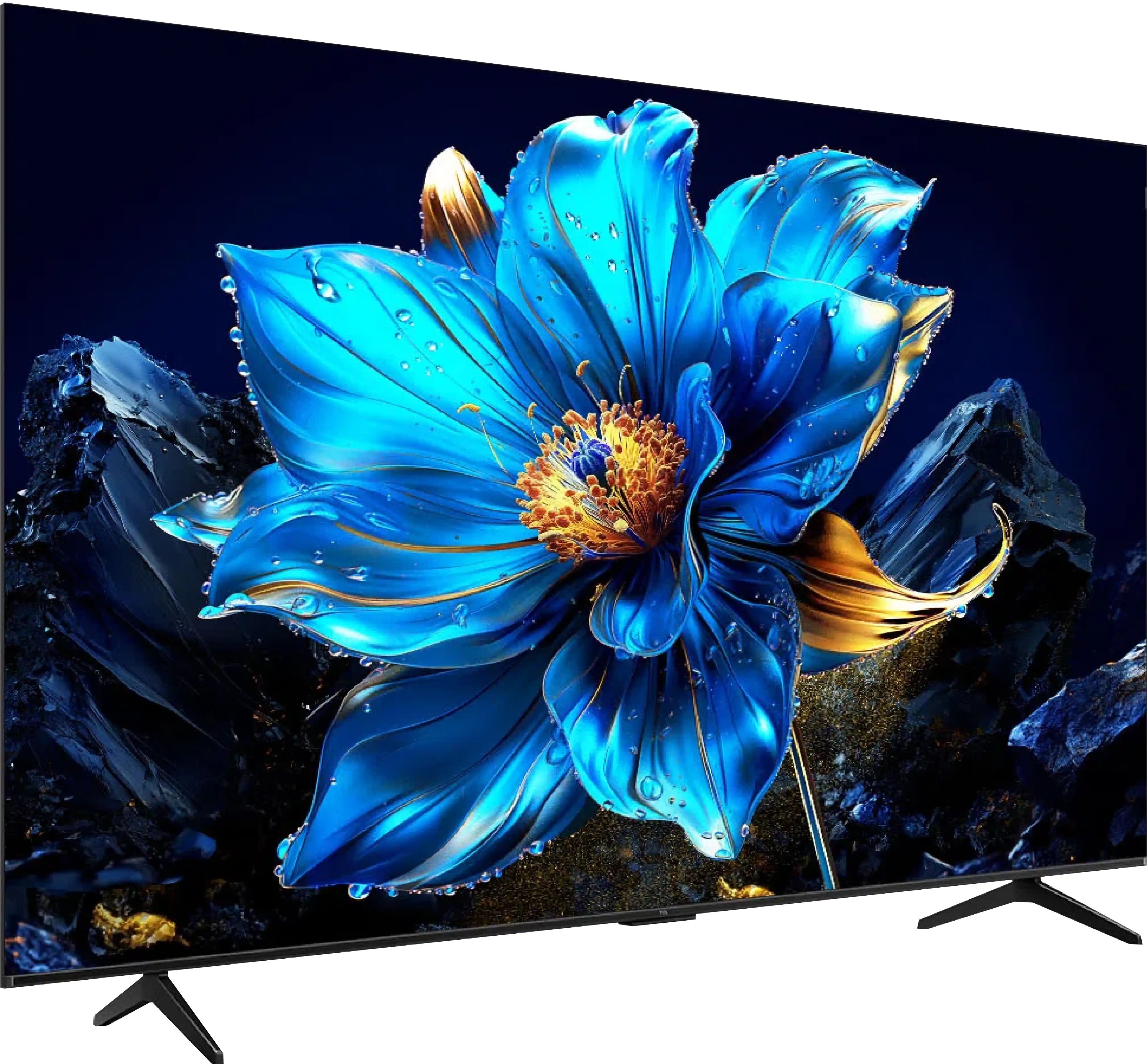
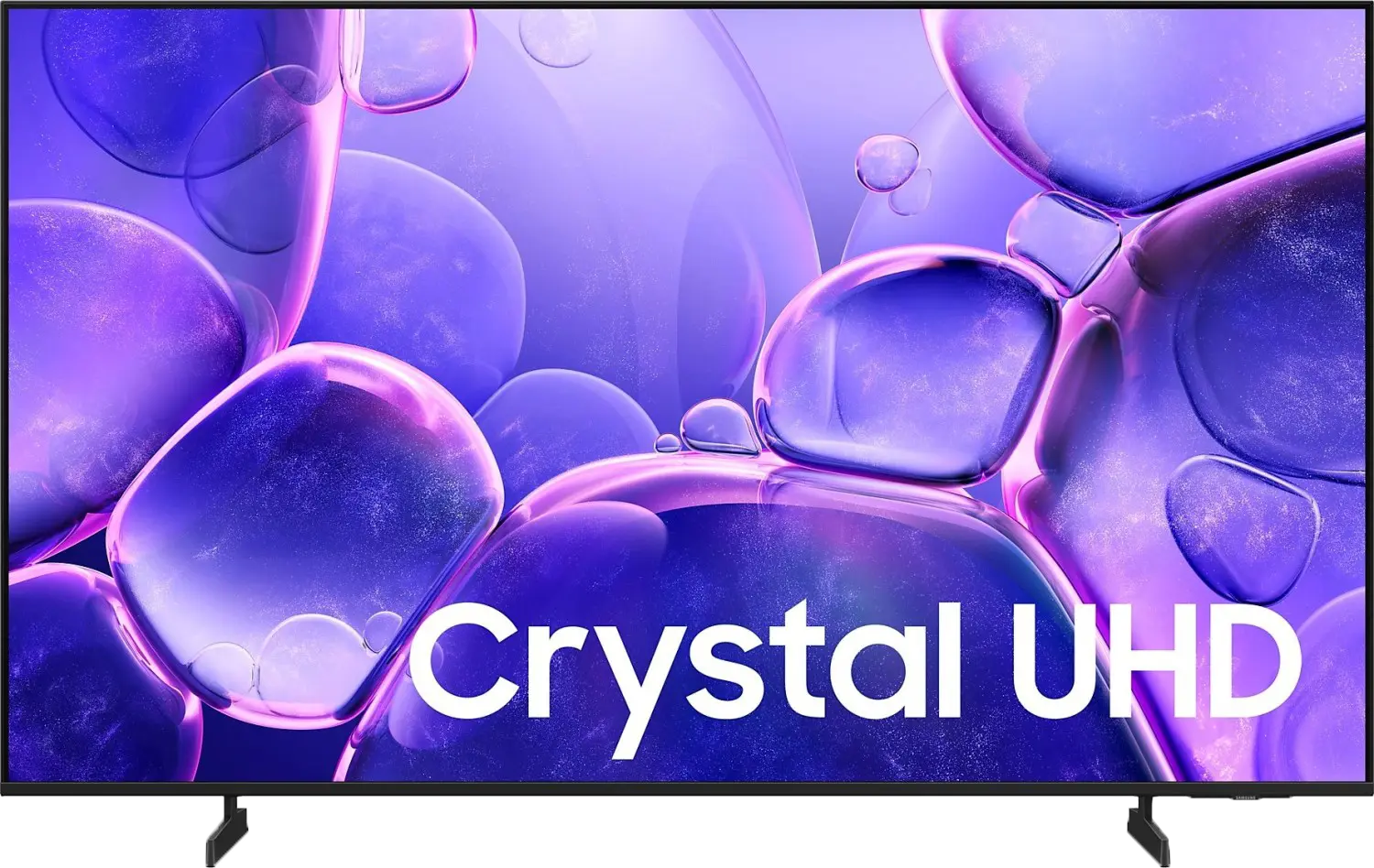
Panel type: LCD VA
Resolution: 3840x2160
System: Android TV
Model year: 2025
Complete the survey to find out the result

Panel type: LCD IPS
Resolution: 3840x2160
System: Tizen
Model year: 2025
Complete the survey to find out the result

Overall rating
5.8
5.6
Movies and series in UHD quality
5.1
5.7
Classic TV, YouTube
5.5
5.9
Sports broadcasts (TV and apps)
5.3
4.9
Gaming on console
7.1
6.3
TV as a computer monitor
2.0
6.0
Watching in bright light
4.6
3.8
Utility functions
7.0
5.3
Apps
9.6
8.7
Sound quality
6.2
5.7
Complete the survey to find out what fits your preferences
Advantages
Great black and high contrast
Support for 120 Hz in games (at lower resolutions)
Very low responsiveness (input lag), great for dynamic gameplay
Modern features for gamers, such as VRR and ALLM
Efficient Google TV system with a huge app database
Very well-functioning Google Assistant in Polish
Easy screen mirroring from your phone (support for AirPlay)
Attractive price
Nice black and contrast (VA panel version)
Advanced Smart system: Tizen
Great for working with text - displays fonts very well
Basic features for gamers - VRR and ALLM
Low input lag
Disadvantages
Low brightness, resulting in a weak HDR effect and the image being barely visible in sunlight
The picture loses quality and colors when viewed at an angle
Not suitable as a computer monitor due to very poor letter readability
Strong dithering effect (highly digital image)
Low brightness
Worse viewing angles compared to the IPS matrix version (Obvious, isn't it? 😉)
Infrared remote control
Worse appearance than its predecessor
Our verdict
Samsung U8000F with a VA panel is a television that can pleasantly surprise in its class – of course, if we know what to expect from it. Its biggest advantage is definitely the black quality. Compared to the version with an IPS panel, the difference is enormous – the picture gains depth, the contrast looks much better, and evening movie sessions no longer feel like watching content through a gray filter. For a budget segment device, this is truly a nice surprise. The proven Tizen system also deserves credit, which not only works smoothly but also offers access to a full range of applications, support for SmartThings, and a voice assistant (via an app). The PC mode and connection to a console work flawlessly – the fonts are clear and readable. Additionally, it has basic features for gamers, such as VRR and ALLM, which – although they won’t turn this TV into an e-sport machine – are more than sufficient for occasional gaming.
Of course, like any construction in this budget, the U8000F with a VA panel has its limitations. The viewing angles are not one of its strong points – watching the picture from the side easily reveals a drop in quality. Nevertheless, it's hard to consider this a serious drawback – because something has to give. Better black levels are always associated with slightly lesser flexibility in adjustment. When it comes to HDR, we have rather a symbolic approach – the brightness is too low to talk about a true “wow” effect, and the color palette is limited. But let’s face the facts – that’s not why you buy such a TV. So if you're planning to purchase the U8000F, we definitely recommend opting for the version with a VA panel. It's still a very basic model, but in this version, it offers more than one might expect – especially in terms of black quality. And in this price range, that’s quite a lot.
TV appearance
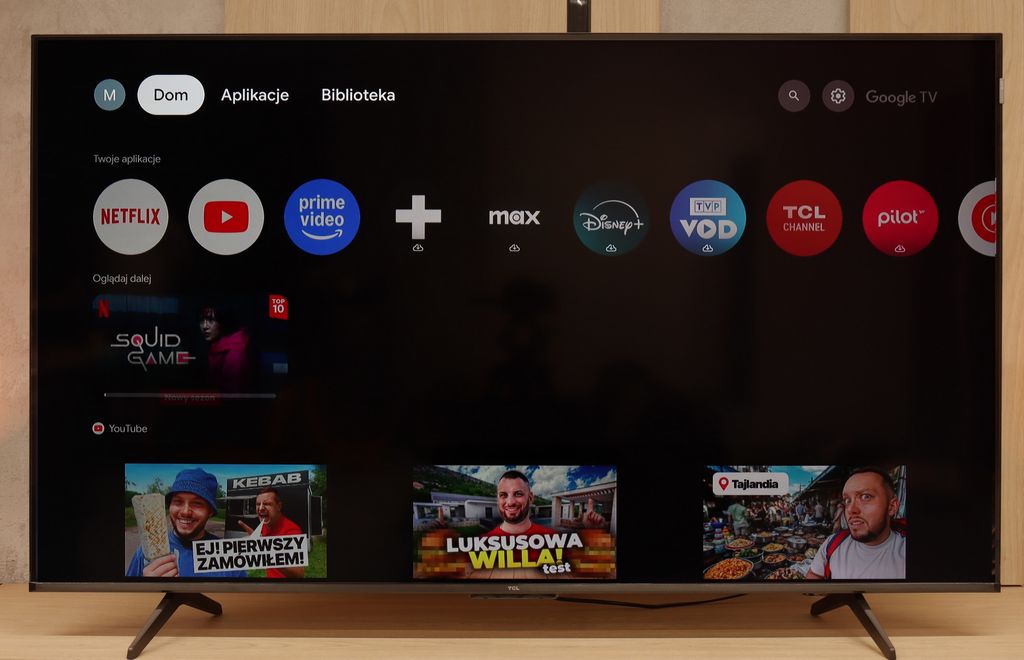
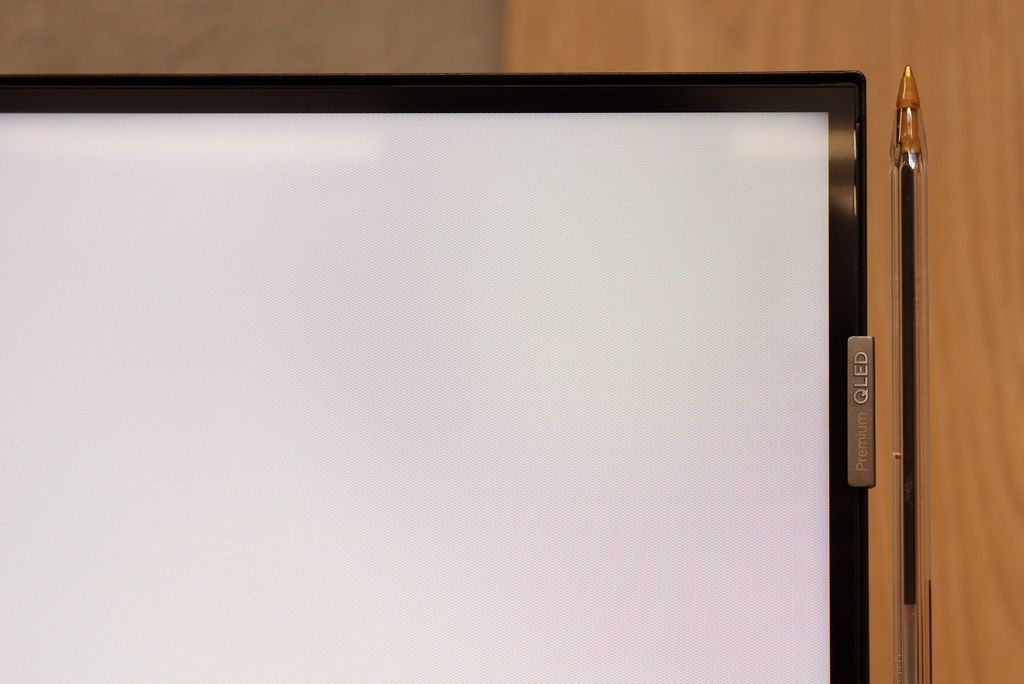
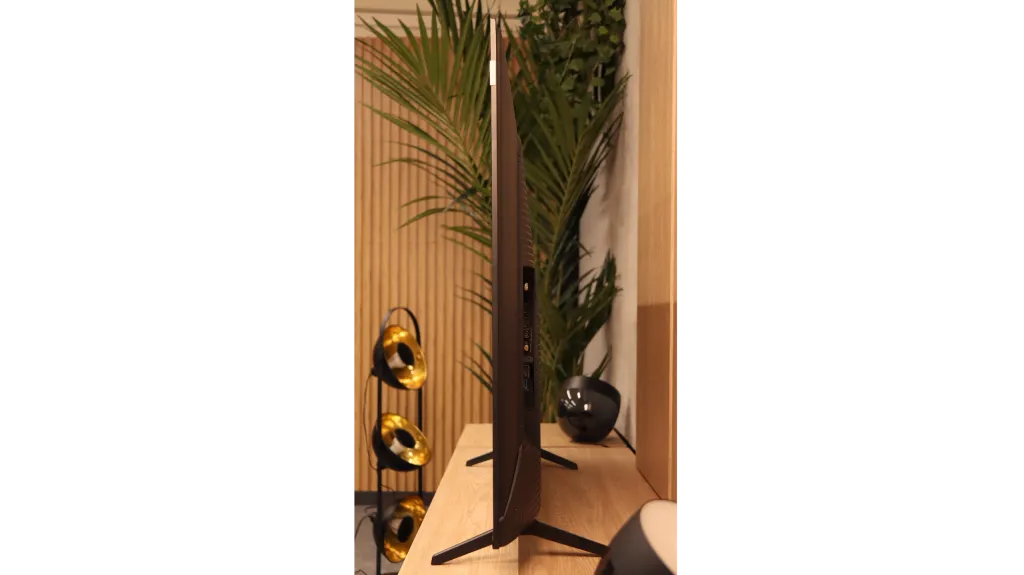
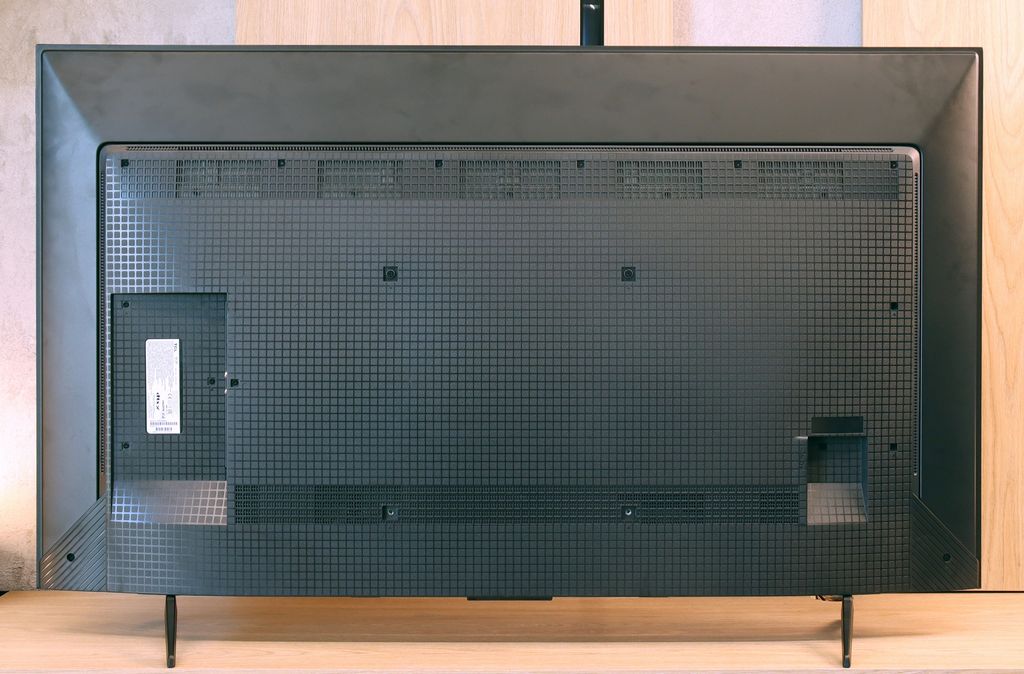
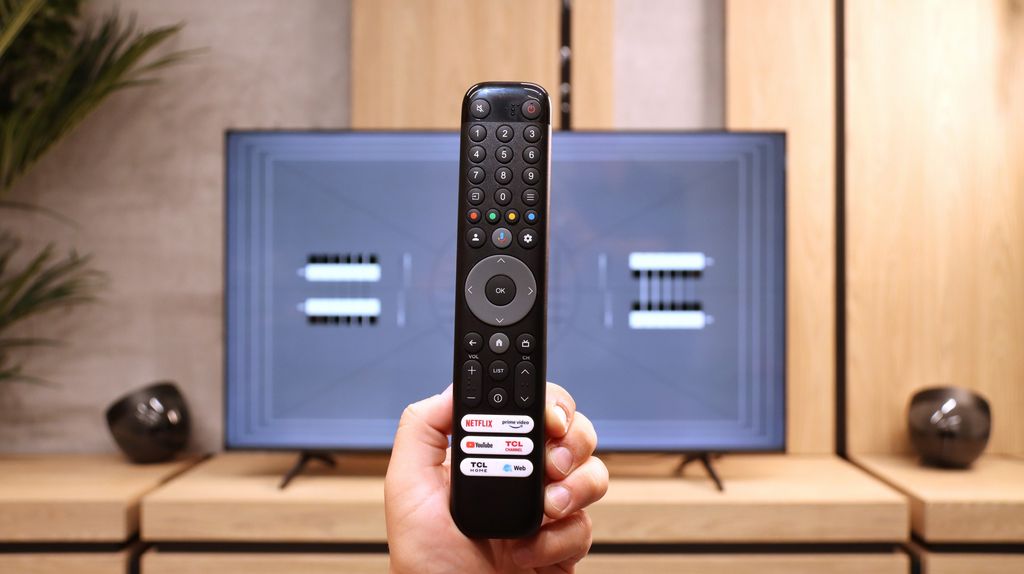
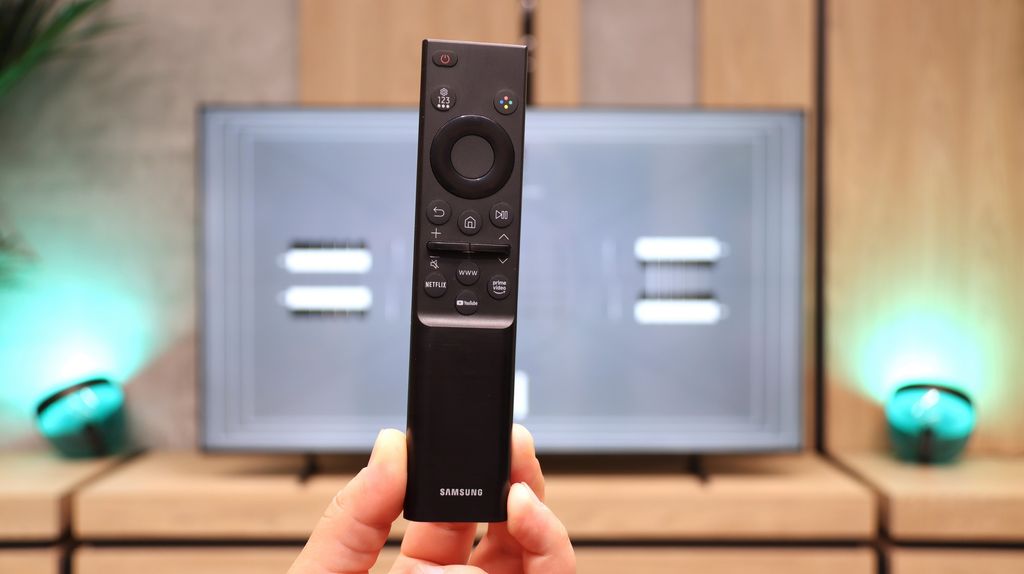
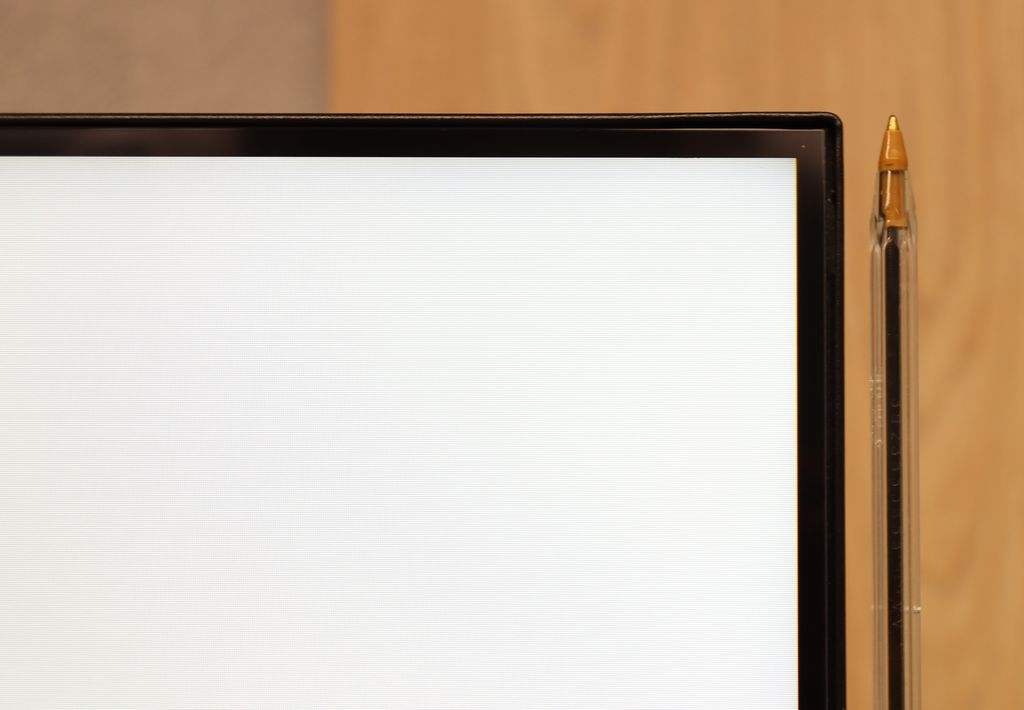
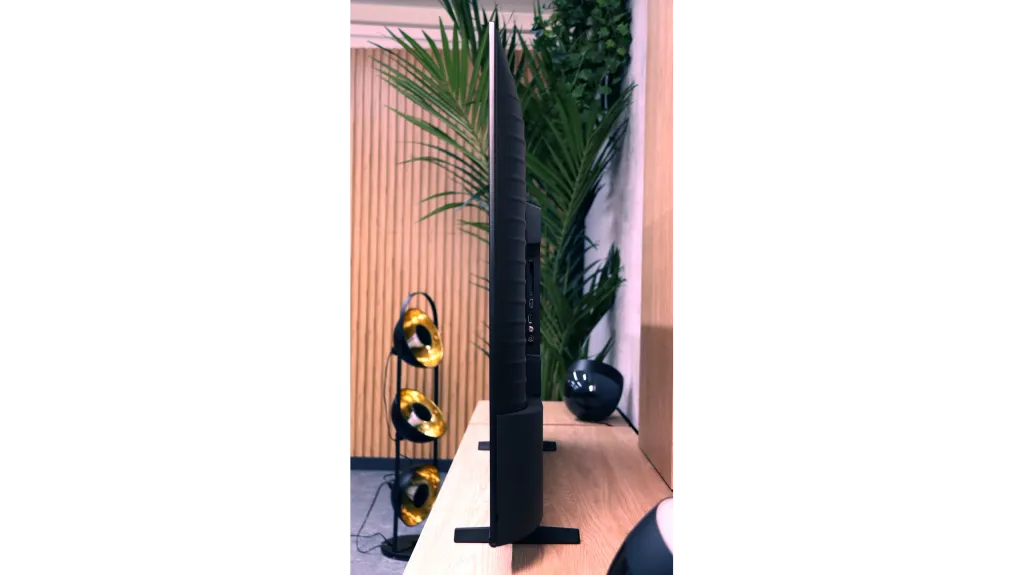
Contrast and black detail
5.2/10
5.3/10
Local dimming function: No
Local dimming function: No
Contrast:

Result
4,000:1

Result
6,500:1

Result
2,700:1

Result
2,800:1

Result
3,800:1

Result
4,600:1

Result
4,150:1

Result
3,900:1

Result
3,750:1

Result
3,400:1
Halo effect and black detail visibility:
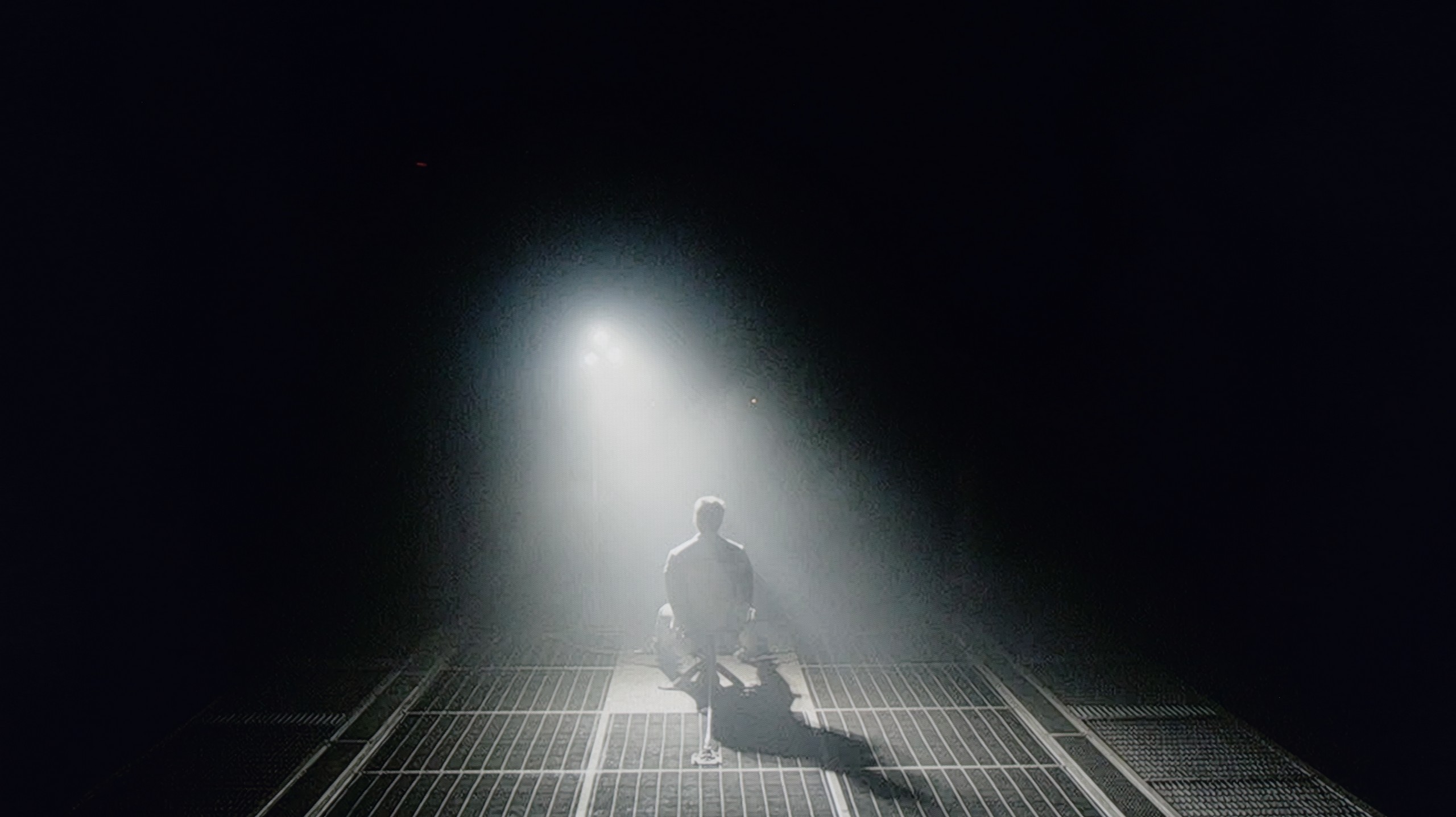
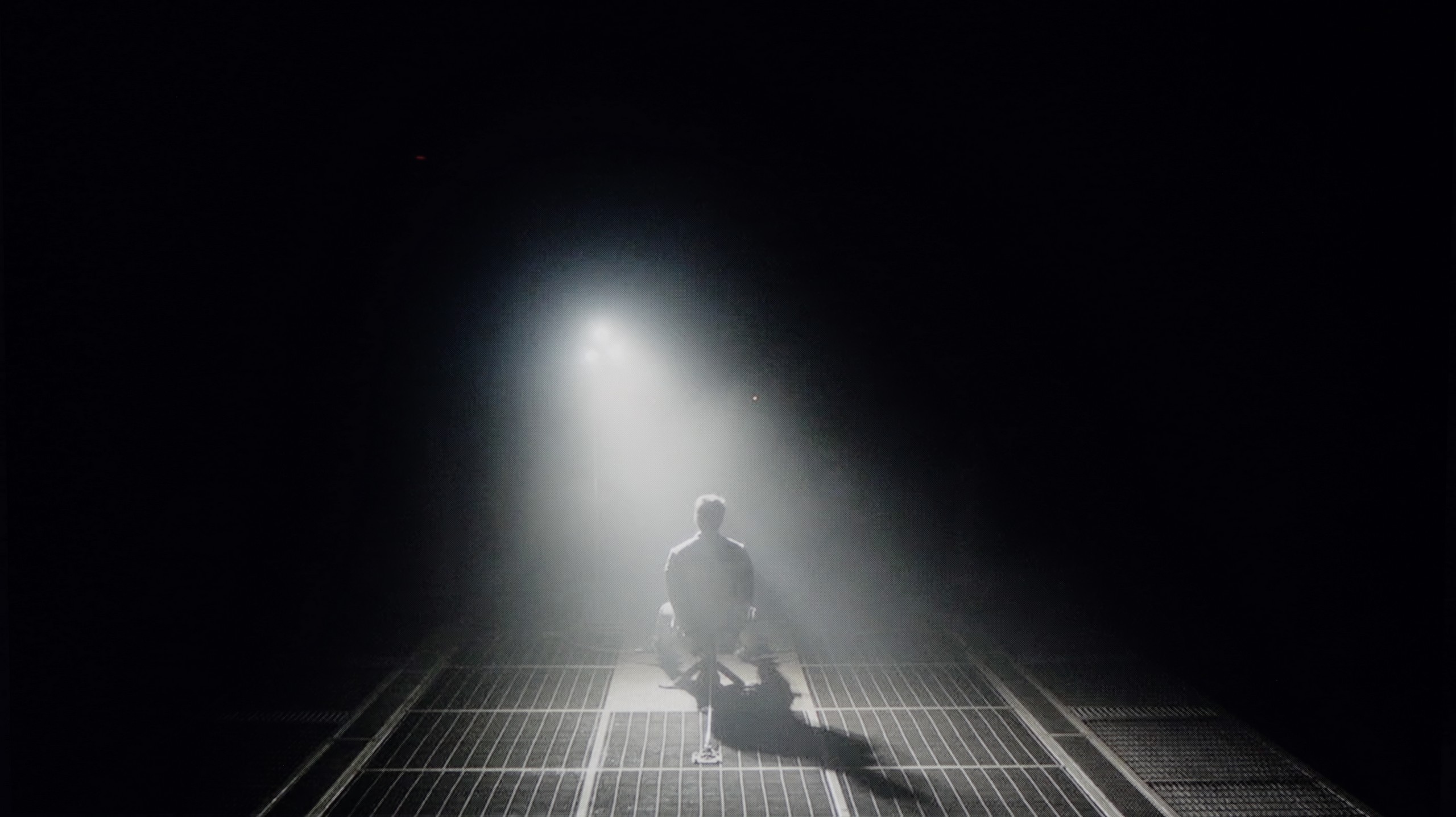
In the discussion about image quality, the conversation almost always starts with the issue of black depth and contrast, which are parameters defining the plasticity and realism of the observed world. And here, the TCL P7k/P79k immediately lays its strongest asset on the table – a VA-type panel. It is its construction that makes the native relationship between the brightest and darkest parts of the image more than satisfactory, especially in the context of the price segment that this model represents. In the majority of scenes, the achieved black has a noble depth, which allows for building an engaging viewer experience. To illustrate the scale, it is worth mentioning that competitive constructions based on IPS panels often offer results that are even four or sometimes five times lower, which constitutes a chasm in direct comparison. Of course, entering the territory of models oriented towards affordability, we must be aware of certain compromises. In the discussed television, we will not find an advanced local dimming system that could further enhance the impression of contrast. However, the absence of this feature is fully understandable and constitutes a logical consequence of positioning the product in the market – this technology in TCL's portfolio for 2025 has been reserved for higher-positioned, more prestigious series marked with the letter "C".
It is worth noting that the test concerns the variants with a VA matrix, which perform significantly better in terms of black levels and contrast compared to the 55-inch version equipped with an IPS panel. Thanks to the higher native contrast (though it is not a top result among VA matrices), the tested scenes looked much better – without noticeable grayness or the typical washed-out shadow effect found in IPS matrices. The black levels in the U8092F model can be considered really good and satisfying, especially in this price range. Of course, this is not a design equipped with local dimming, so it is hard to expect spectacular results in very challenging scenes. On the other hand, we are talking about an exceptionally budget-friendly television that performs quite solidly within its range.
HDR effect quality
4.3/10
3.1/10
Luminance measurements in HDR:

Result
206 nit

Result
247 nit

Result
297 nit

Result
237 nit

Result
281 nit

Result
212 nit

Result
173 nit

Result
265 nit

Result
90 nit

Result
250 nit
Scene from the movie “Pan” (about 2800 nits)


Scene from the movie “Billy Lynn” (about 1100 nits)


Static HDR10


Dynamic: Dolby Vision
Dynamic: HDR10+


HDR luminance chart:
Samsung U8000F (VA)
HDR luminance
TCL P7K / P79K
HDR luminance
When evaluating the HDR effect, we must make it clear and without marketing embellishment: the P7K/P79K is not and was never meant to be a master in this field. The maximum peak brightness that this panel can generate is only around 300 nits. This is a borderline value, a sort of thin red line between what can be considered a barely satisfactory HDR signal and what is really not much different from standard dynamic range (SDR), unfortunately leaning towards the latter. Synthetic tests found brutal confirmation in reality – our measurements taken during movie screenings showed that luminance in key bright parts of the content rarely exceeded the threshold of 200-250 nits. Therefore, this is not a television that would allow content produced in a wide tonal range to truly shine, and we must openly acknowledge that.
Unfortunately, the issue of color reproduction is presented equally restrained. Although the manufacturer positions this model in the "QLED" family, thanks to the use of a PFS LED filter, the results do not match the heightened expectations. The coverage of the wide DCI-P3 color gamut is only 86%. Compared to the market, this is at best an average result, as most devices that employ additional layers to expand the color spectrum easily achieve values at a minimum level of 90-92%.
While the U8000F with a VA panel can still be praised for decent blacks, there are no longer any reasons to be impressed regarding brightness – especially in HDR scenes. The television reaches a maximum of just under 250 nits, which is simply too little to talk about any impressive light effects. Bright elements come off as pale, and scenes that should shine look rather flat. An interesting situation was observed during the test of a scene from the movie Sicario 2 – the screen noticeably darkened, as if the television were trying to hide its limitations in displaying blacks. One might get the impression that the device artificially darkens the image to improve contrast, but in practice, the effect doesn't make much of a difference, other than that we see less on the screen. Additionally, there's the issue of colors – the U8000F does not support a wide color gamut, so don't expect vibrant, saturated shades known from better models. The HDR image here resembles slightly brightened SDR and… maybe that’s even a good thing. For this model, it's not worth setting expectations for cinematic experiences – it's better to treat HDR as a modest addition.
Factory color reproduction
5.9/10
6.5/10
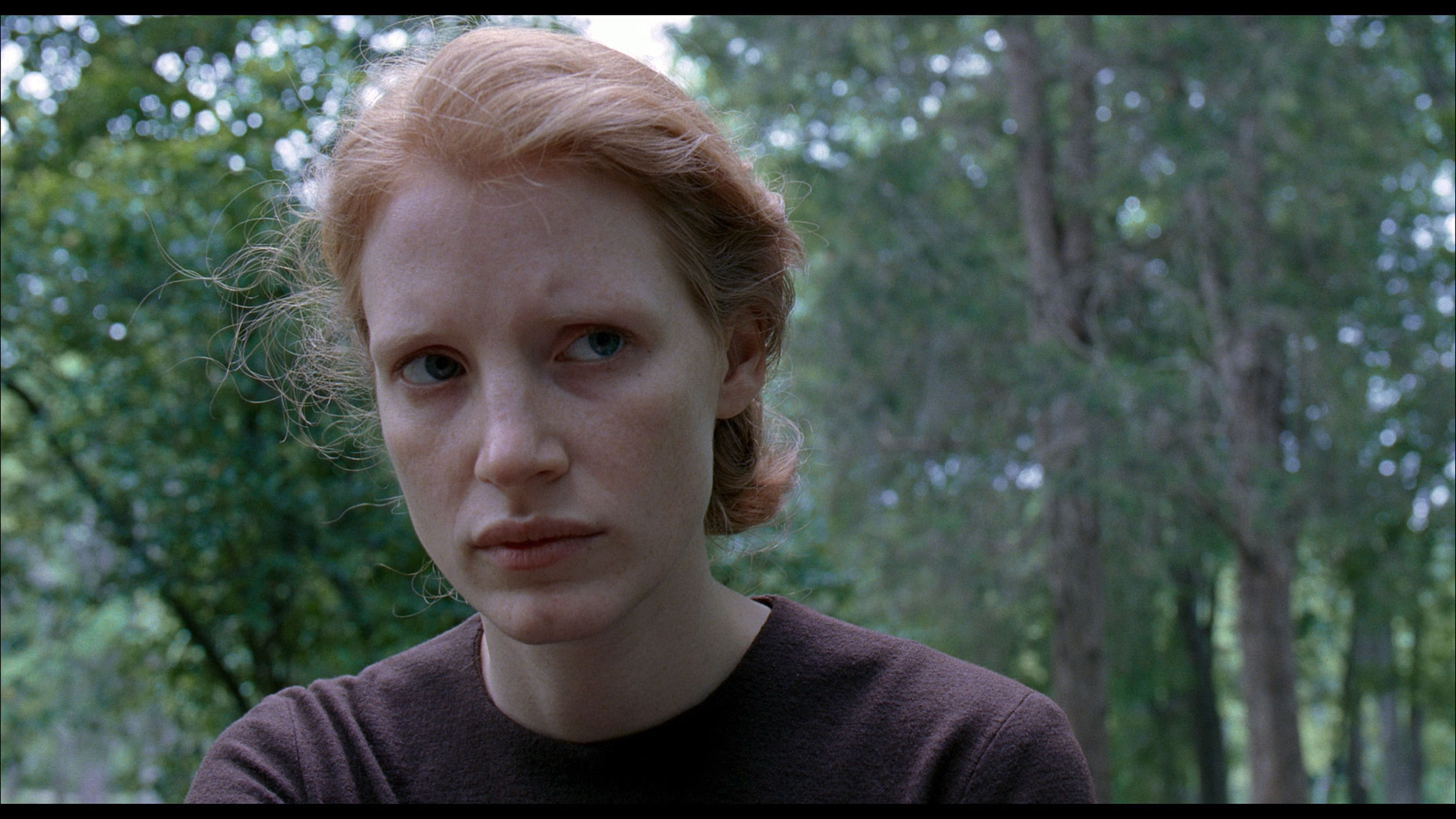
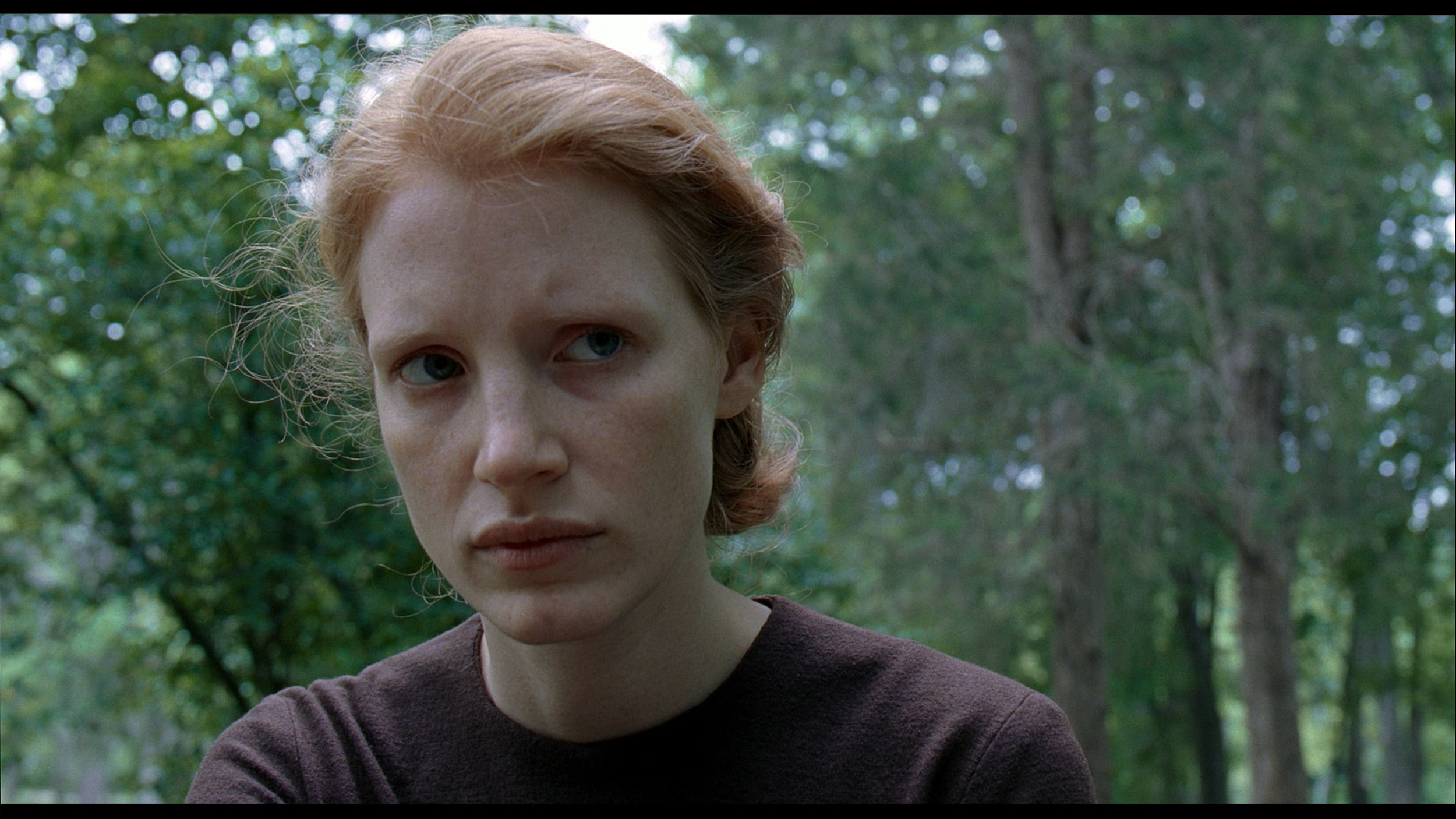
Factory Mode
After calibration
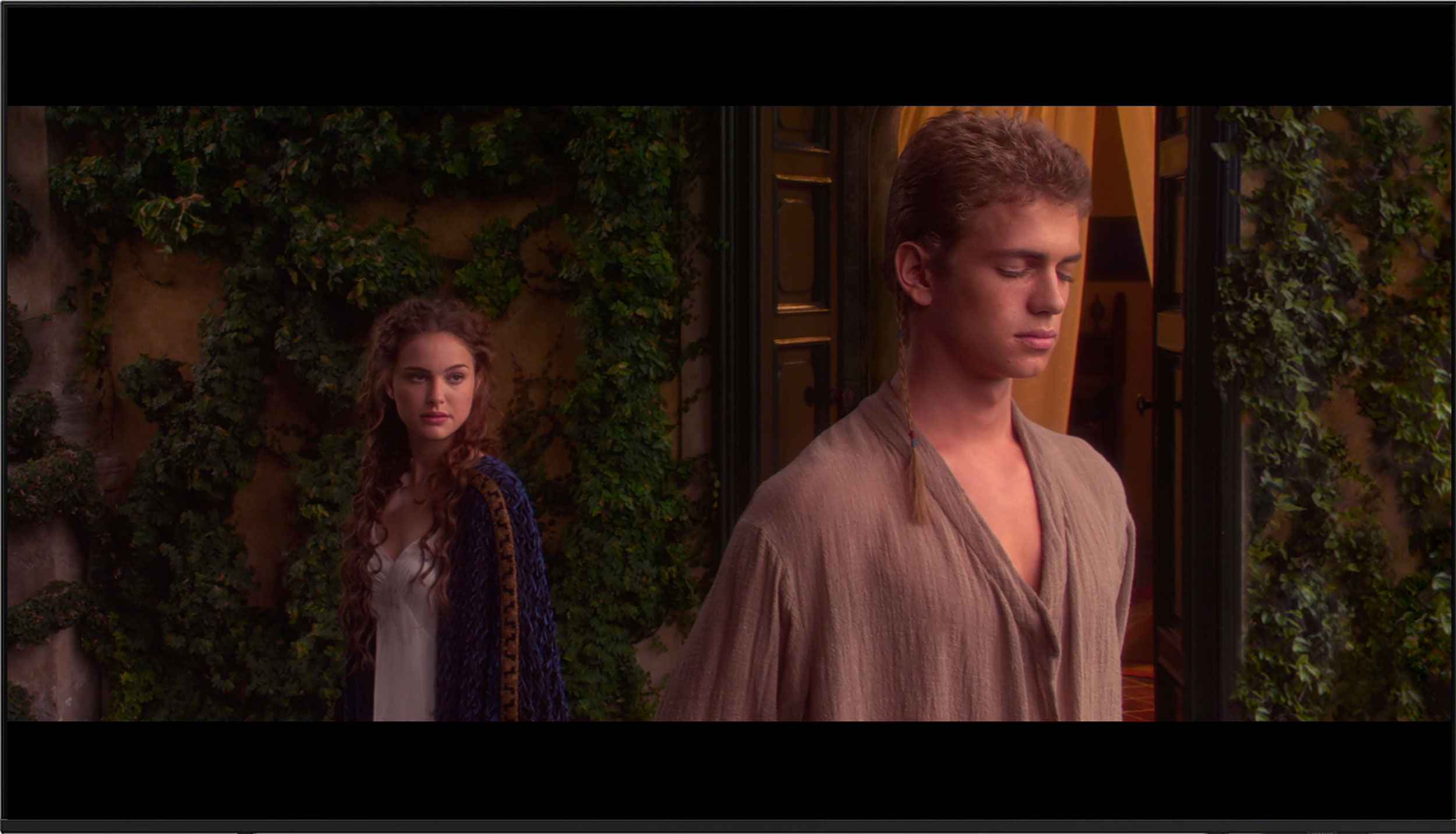
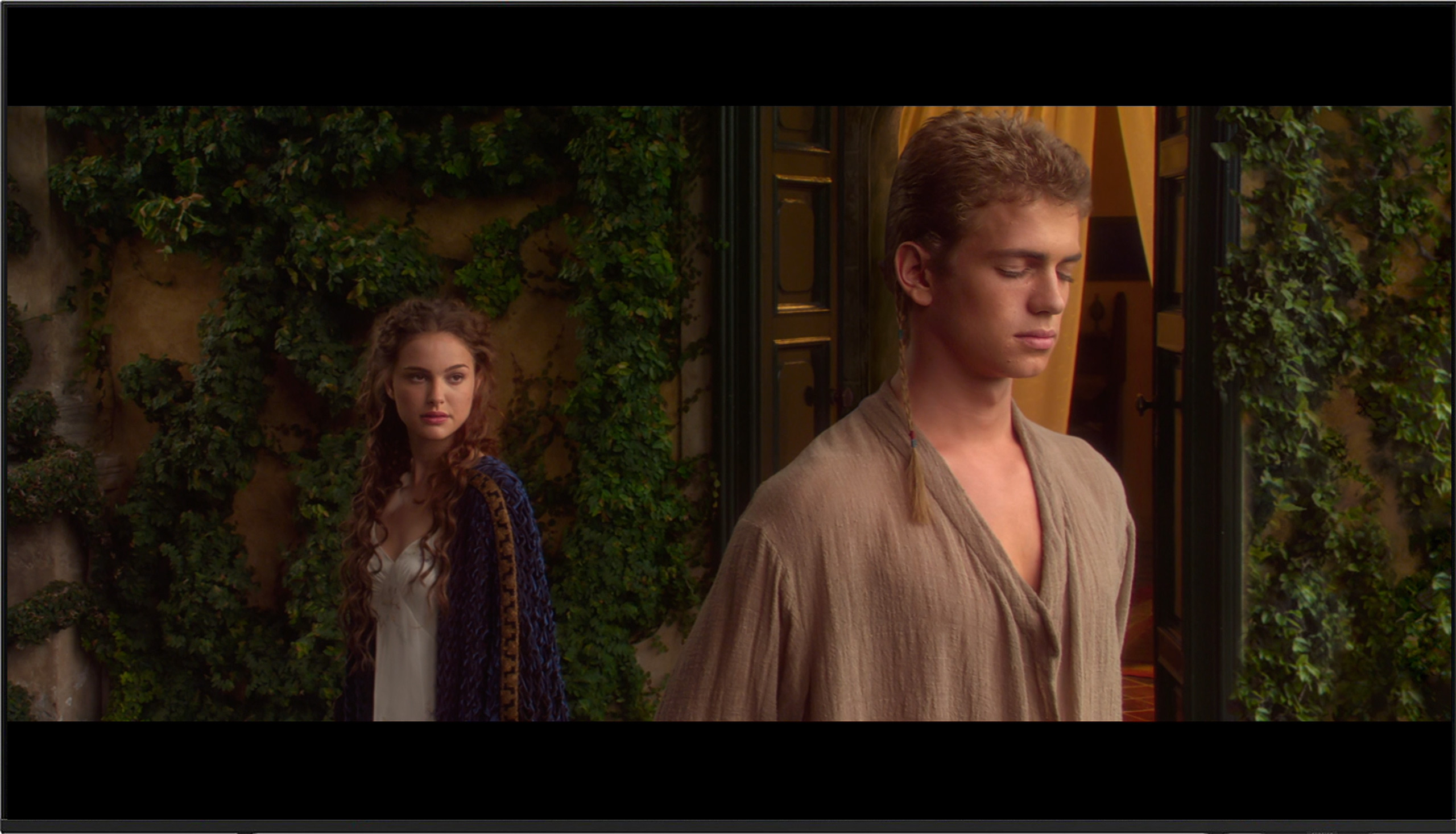
Factory Mode
After calibration
Every reliable image quality assessment must begin by selecting the most optimal factory mode. In the case of the tested model P7K/P79K, the choice was confidently made for the "Film" mode. It is this mode that presents an image closest to the creators' intentions, avoiding both the exaggerated brightness of dynamic mode and the excessive dimming known from eco settings. And it must be admitted that, for a device in this price range, the factory calibration is surprisingly decent, although it is not free from a few stumbles. The most noticeable flaw turned out to be an imperfectly adjusted white balance. A slight dominance of the blue component gives the image a subtly cool, chilly character, thus deviating from the exemplary neutrality that the director wanted to show us. The television performs much better in reproducing the grayscale in a standard dynamic range – the gamma curve is executed almost perfectly. A minor reservation can only be made for the darkest parts of the image, where a slight deviation from the norm causes a loss of some detail in the shadows. The most serious challenge for TCL's software, however, was the interpretation of the HDR signal, which is illustrated by the EOTF curve. The television follows its own, rather free path here – the darkest details are disproportionately brightened, followed by a noticeable slowdown in brightness increase for midtones. Fortunately, most of these imperfections are software-related issues that can be eliminated. With this thought in mind, we proceeded to the professional calibration process.
The Samsung U8000F has been tested by us in the best picture mode available out of the box – namely, Filmmaker Mode. This profile is supposed to provide a neutral, cinematic image, free of unnecessary enhancements and artificial beautifications. In the case of SDR content – mainly in HD or SD resolution – the television performed surprisingly well right out of the box. The only noticeable imperfection was brightness management. The gamma chart showed some deviations – slight brightening or dimming of certain tones – but in practice, it did not significantly affect the viewing experience. For a television in this segment, it performs quite well.
However, the situation is considerably weaker in HDR mode. Although white balance was still acceptable, color errors were very pronounced. In the Color Checker test, almost every sample was outside the target point, and the image itself looked unnatural – colors were shifted, sometimes too cool, at other times simply dull and lifeless. The main problem lies in the hardware limitations – the U8000F does not support the wide color gamut of DCI-P3, so it is physically unable to reproduce the colors anticipated by the HDR standard. And unfortunately, this is evident in almost every more demanding scene.
Color reproduction after calibration
7/10
7.5/10




The calibration process turned out to be a home run, especially in the context of standard dynamic range (SDR) content. We successfully managed to eliminate the TV's tendency to emphasize cool tones, restoring the whites to their natural neutrality. Furthermore, precise adjustments allowed us to correct a slight error in the gamma curve, so the darkest areas of the image regained their proper depth, without a trace of unnatural brightening. The effects are measurable and impressive – in the ColorChecker test, the vast majority of color reproduction errors fell below the perceptual threshold, achieving a deltaE value below 2. This is a result that would not shame much more expensive constructions. Unfortunately, in the case of HDR content, we hit a wall in the form of the inherent limitations of the panel itself. And although we managed to bring the colors in line, the software's specifics mean that the TV still adapts brightness in its own way, as evidenced by the persistent, non-standard EOTF curve. In summary, calibration brings tremendous added value, but one must be aware that it cannot overcome certain physical barriers. A slight boost in black levels, resulting from the lack of local dimming, and limited peak brightness mean that HDR content will not always be able to showcase its full potential. This is simply not the main task of this display; its true strength, especially after professional tuning, lies in the viewing of SDR materials.
Right out of the box, the U8000F offered quite a decent picture in SDR for its price range. However, we managed to slightly enhance it – we reduced a subtle purple tint and improved the gamma characteristics, giving it a more natural curve. Despite these adjustments, the TV still tends to brighten the brightest details a bit too aggressively – the gamma graph shows a clear dip that cannot be fully corrected.
On the other hand, in HDR mode, it is noticeably weaker. It's hard to talk about any significant improvement here – despite attempts to tweak the settings, the picture still presents considerable color errors. A Delta E exceeding 7 means noticeable deviations that couldn't be effectively reduced. Unfortunately, this is a limitation of the design itself – the U8000F was simply not designed for serious HDR. In everyday SDR viewing, it performs quite well, but when it comes to HDR content... it's best not to have too high expectations.
Smoothness of tonal transitions
5/10
9.5/10







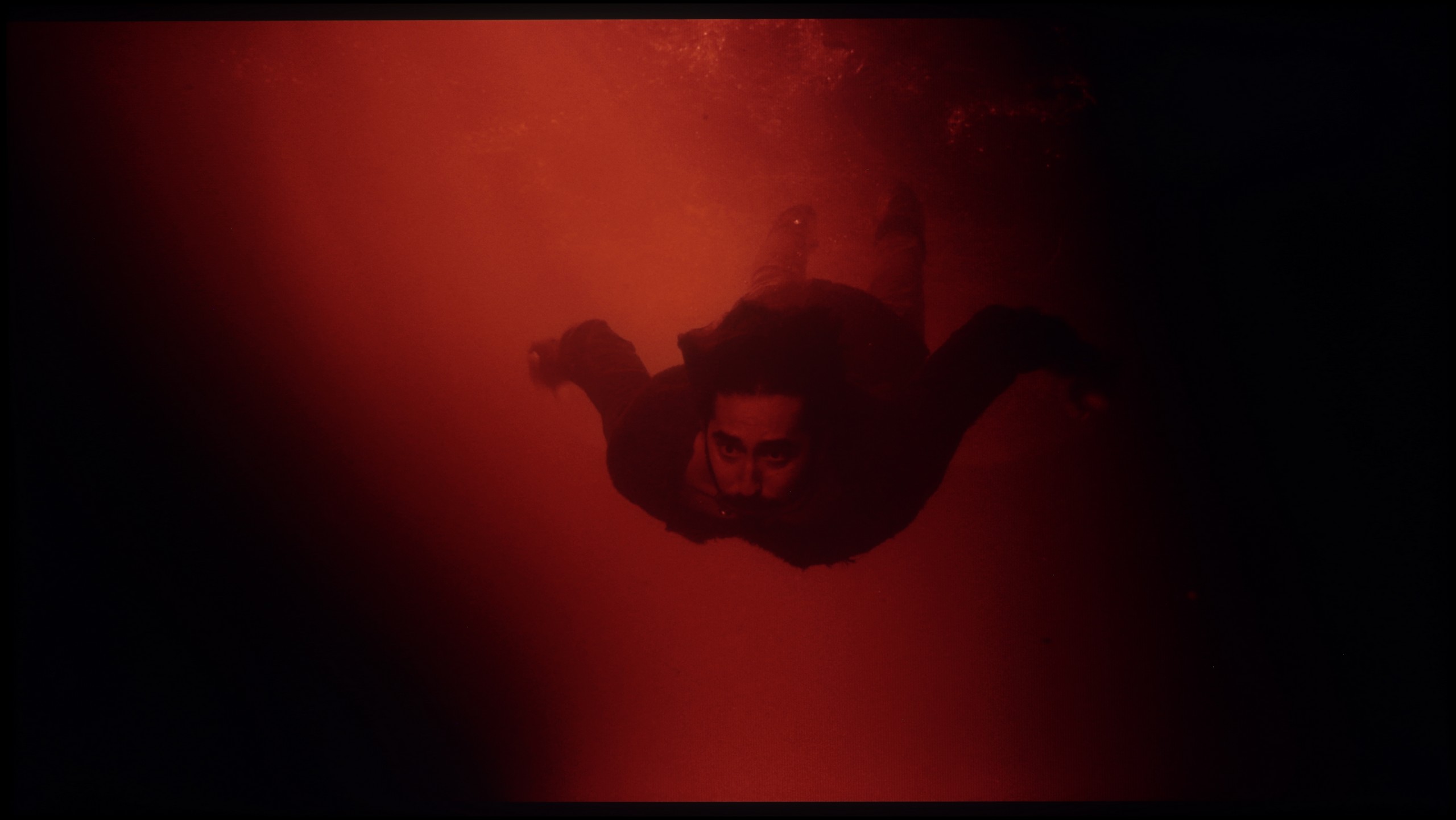




The issue of fluidity in tonal transitions, or popular grading, is another area where the P7K / P79K evokes mixed feelings and surprises with its dual nature. If we were to evaluate solely its ability to render smooth color gradients, we would undoubtedly give it a solid score of 8/10. Unfortunately, this positive image is marred by the use of very aggressive and unsightly dithering. This artifact is particularly noticeable on demanding test patterns – such as the one depicting an actor submerged in red water – where a rough, unnatural texture appears on uniform color surfaces, revealing the digital nature of the image. This is particularly disappointing as it is not a new issue. It seems to be a sort of legacy from previous generations of budget TCL models, which is a shame because it constitutes a flaw on what is essentially a quite competent image and is a mistake that could have been avoided.
One of the key elements influencing the perception of the image is the way the television handles tonal transitions – that is, the blending of colors and shades without clear boundaries. In the case of the Samsung U8092F model, it performed really well. On the test screens, we did not observe any visible banding or disruptions in the colored gradients. The image retains a natural quality, without excessive digital interference, which unfortunately tends to be the norm in this class of equipment. Minimal imperfections appeared in very bright sections, but they are practically imperceptible and do not affect daily use of the television.
Image scaling and smoothness of tonal transitions
7/10
5/10
Smooth transition function


Image without overscan on the SD signal


After a series of harsh evaluations, fortunately, the time comes for praise, and this is due to the TCL AiPQ image processor for its work in digital processing and content scaling. It should be noted right away that we are not talking about the level known from flagship designs; nevertheless, in the price segment represented by the P7K/P79K, the results achieved are more than solid. The feature that smooths tonal transitions performs particularly well, effectively eliminating posterization, which are the characteristic bands often visible in materials with higher compression, such as from the YouTube service. The algorithm can elegantly remove unwanted gradients, which ultimately looks really good. The television also competently handles upscaling, which is the task of raising low-resolution materials to 4K standard. The output image, although it may seem a bit too sharp out of the box, fortunately, is not a problem. The software allows for easy adjustment of this parameter using a sharpness slider, so the final appearance can be easily tailored to personal preferences.
When it comes to how the Samsung U8000F handles lower quality materials, we must admit that Samsung has made progress compared to its predecessor from last year – the DU7192 model, which theoretically occupies the same position in the lineup. This year's model is equipped with a feature for improving the fluidity of tonal transitions, which has been implemented much better than last year. Yes, the TV still uses quite strong algorithms that can distort details or remove film grain, but despite that – it can be confidently said that it works effectively. However, not everything went perfectly. The U8000F has noticeable issues with slight image stuttering when watching very old content in very low resolution. If someone plans to play their old VHS tape, they should be prepared for the image to appear slightly "choppy."
Blur and motion smoothness
4.8/10
4/10
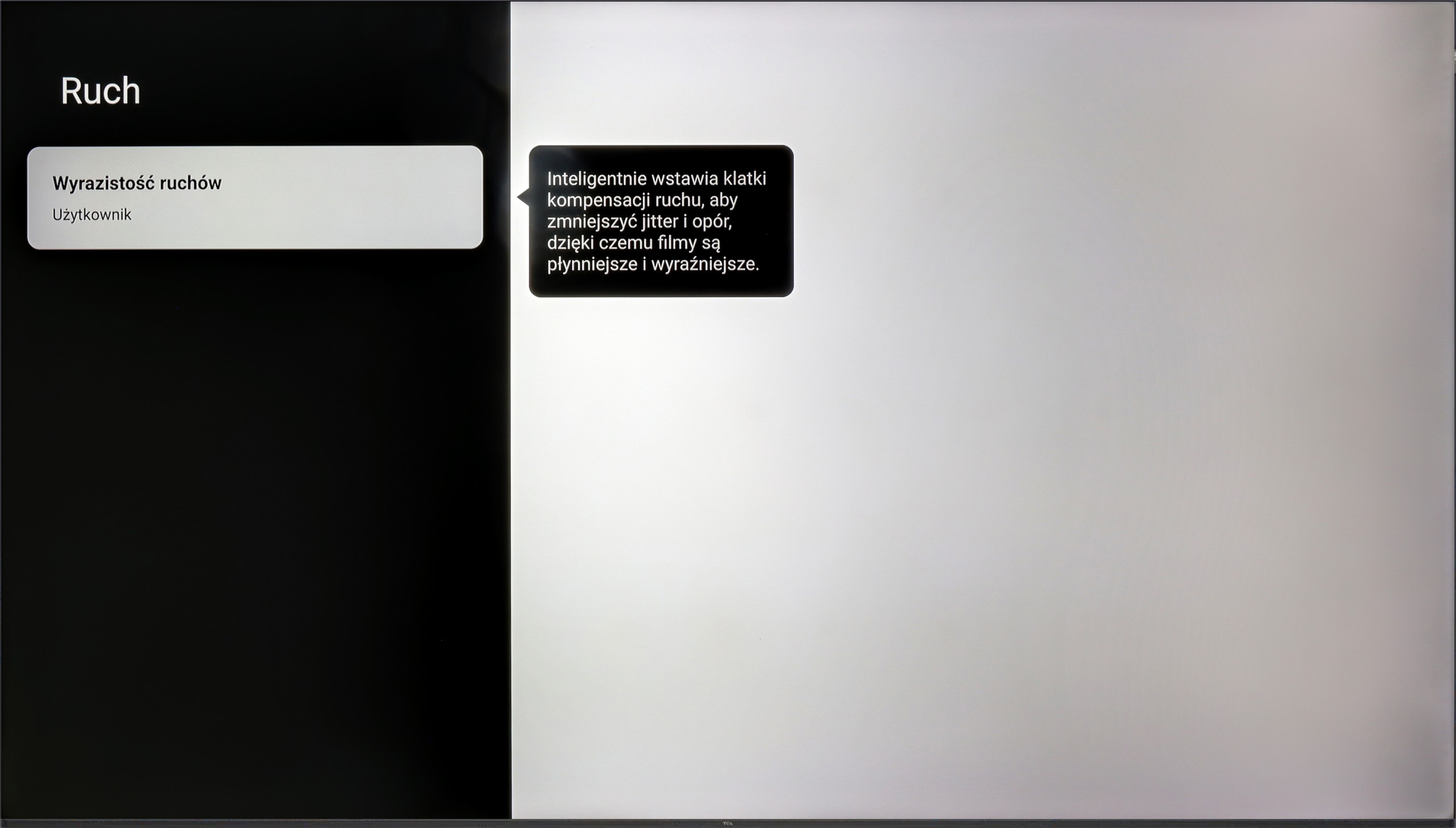
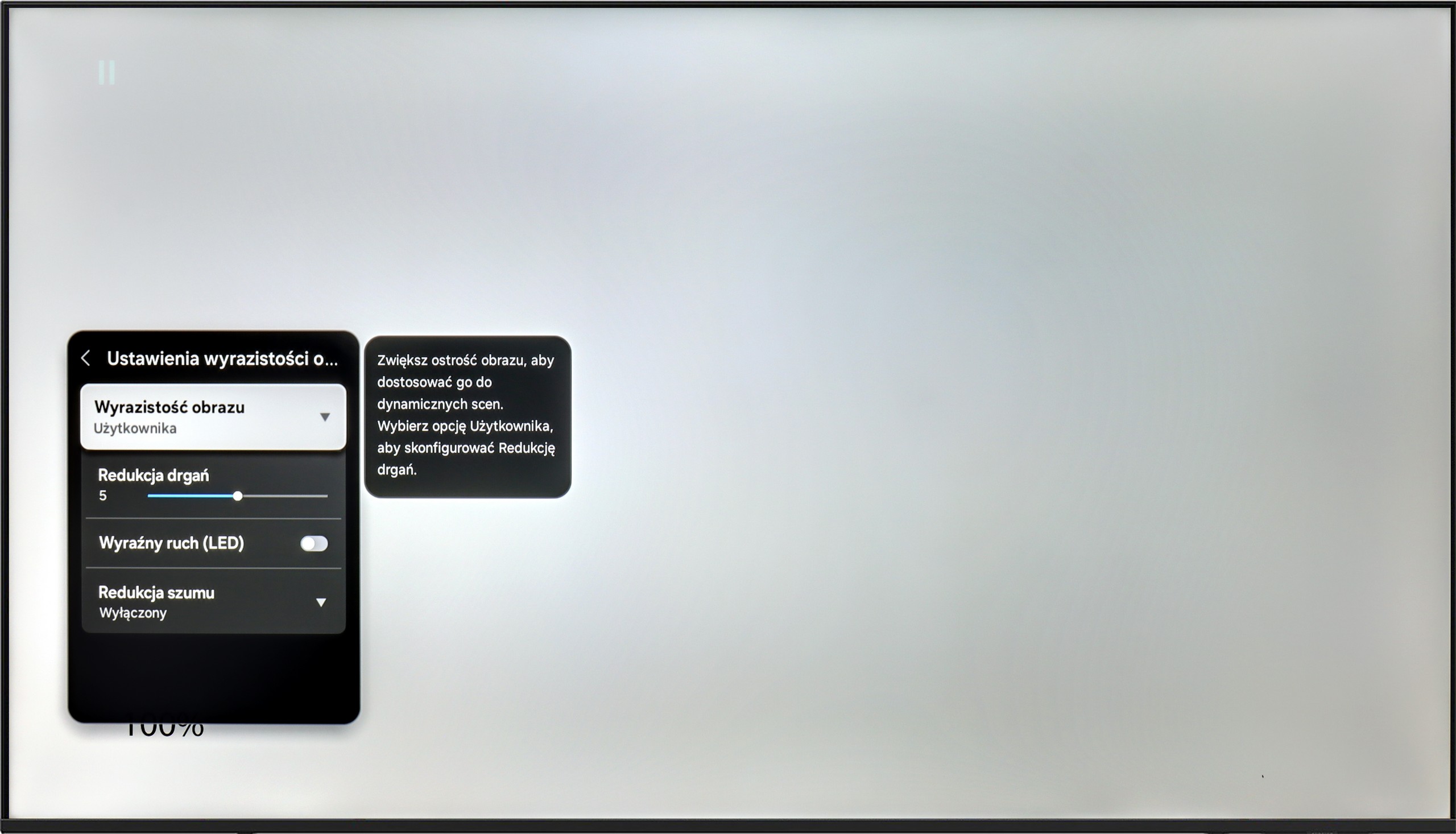
Blur (native resolution, maximum refresh rate):

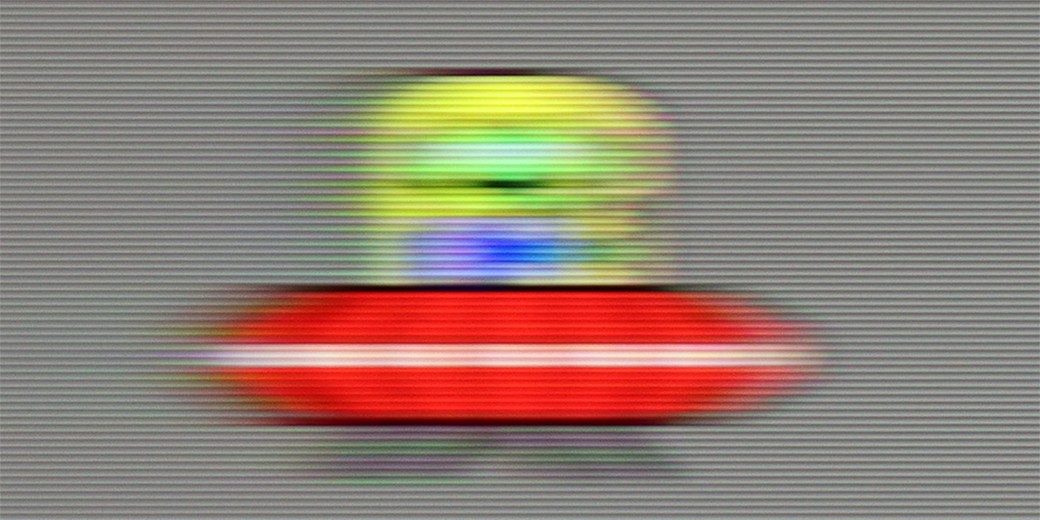




Blur (BFI function enabled):
Image flickers in this mode



Blur ():
Blur (Upłynniacz ruchu 4K@60Hz):



The issue of fluidity and sharpness of the image in motion is inextricably linked to the fundamental parameter of the panel, and in the case of the TCL P7K/P79K, we are dealing with a panel that has a native refresh rate of 60 Hz. This specification already defines its capabilities and makes it difficult to unequivocally recommend it to enthusiasts of dynamic sports broadcasts. During rapid camera movements, the image loses sharpness, and the panel itself also shows a slight tendency to blur, which may be noticeable to more sensitive viewers. Fortunately, not everything in this aspect has been left to chance. The manufacturer has implemented a simple motion smoothing system, which is primarily used in film materials recorded at 24 or 30 frames per second. Thanks to a dedicated slider, the user can independently decide on the final character of the motion – from a fully cinematic, slightly juddery image to achieving a very smooth, almost theatrical effect. It is a simple yet effective tool that allows users to tailor the viewing experience to their own preferences.
The Samsung U8000F is equipped with a 60 Hz panel, so right from the start, it's clear that we shouldn't expect miracles. This is simply standard in this class – sufficient for everyday viewing but without any frills. The TV offers one motion enhancement slider – a feature called "Motion Blur Reduction," which allows us to adjust the smoothness of the image in movies. Higher settings give a more "theatrical" and smoothed effect, while lower settings help maintain the original character of the film with a slight 24p effect. An interesting feature is "Clear Motion LED," which is a BFI mode – inserting black frames between image frames to improve motion sharpness. However, in practice, the screen flickers heavily when it's activated, and it should be treated more as an experiment than something that genuinely improves gaming comfort.
Console compatibility and gaming features
6.7/10
4/10
- ALLM
- VRR
- VRR range48 - 120Hz48 - 60Hz
- Dolby Vision Game Mode
- Correct implementation of HGIG
- 1080p@120Hz
- 1440p@120Hz
- 4K@120Hz
- Game bar
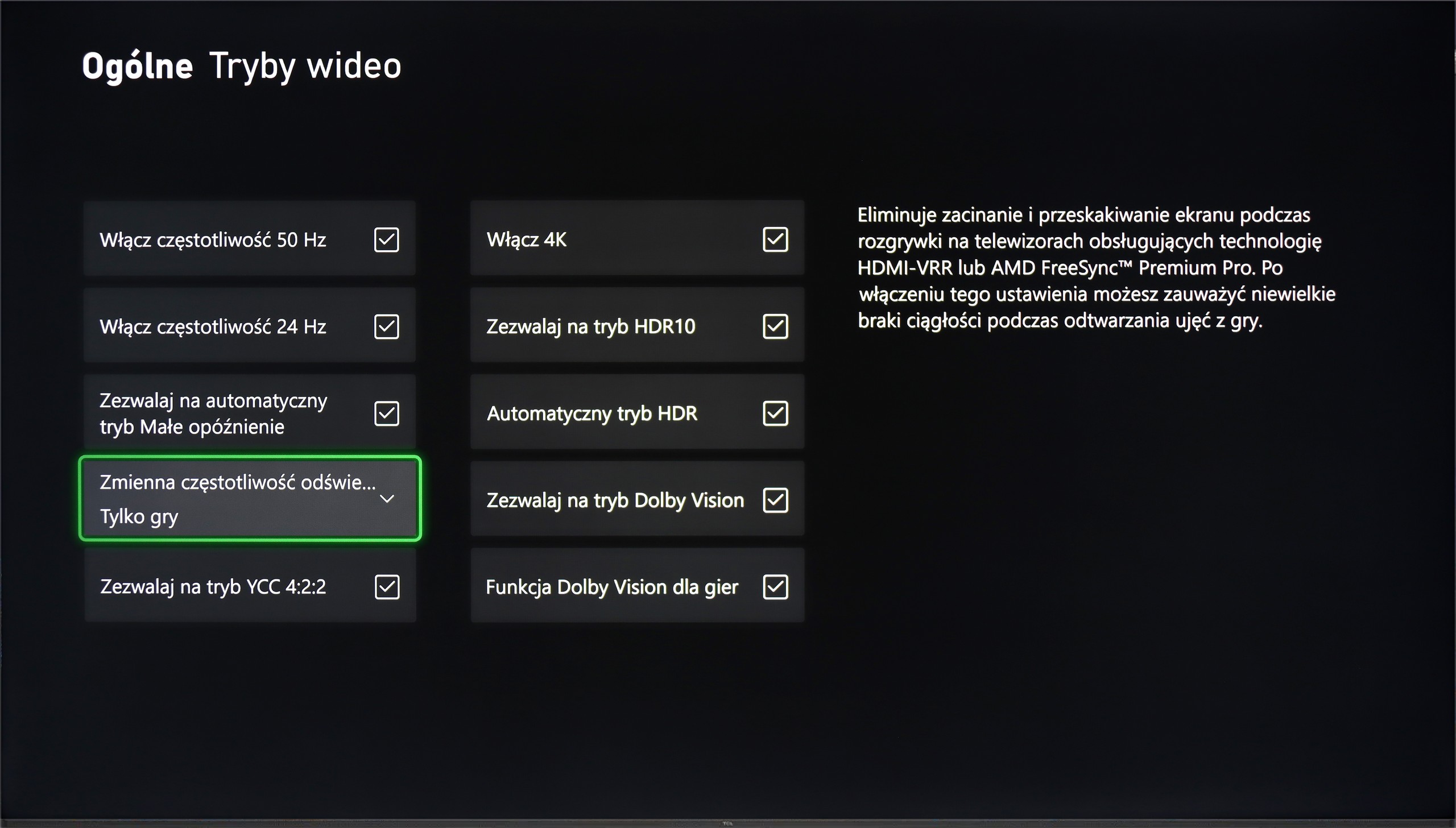
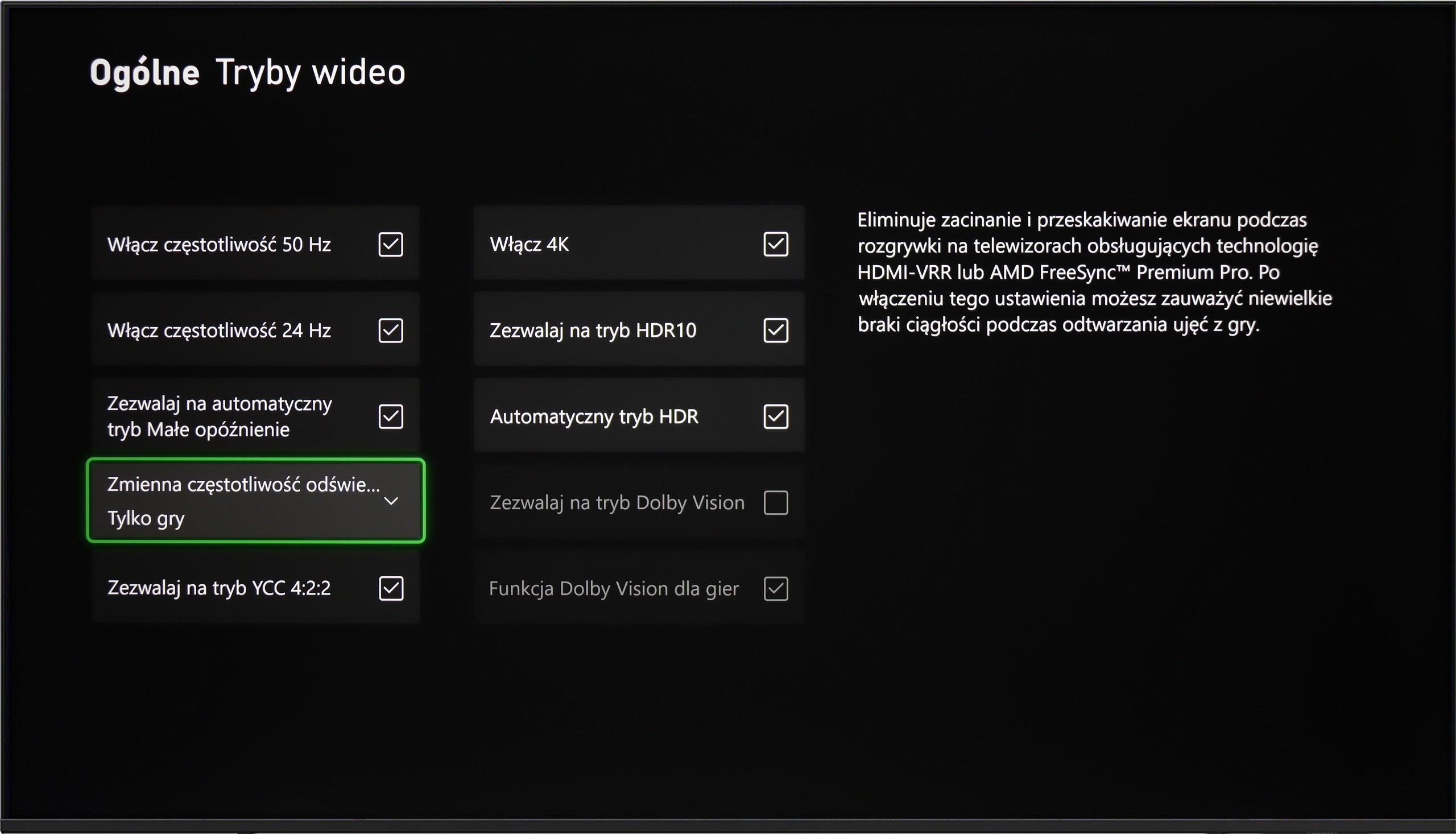
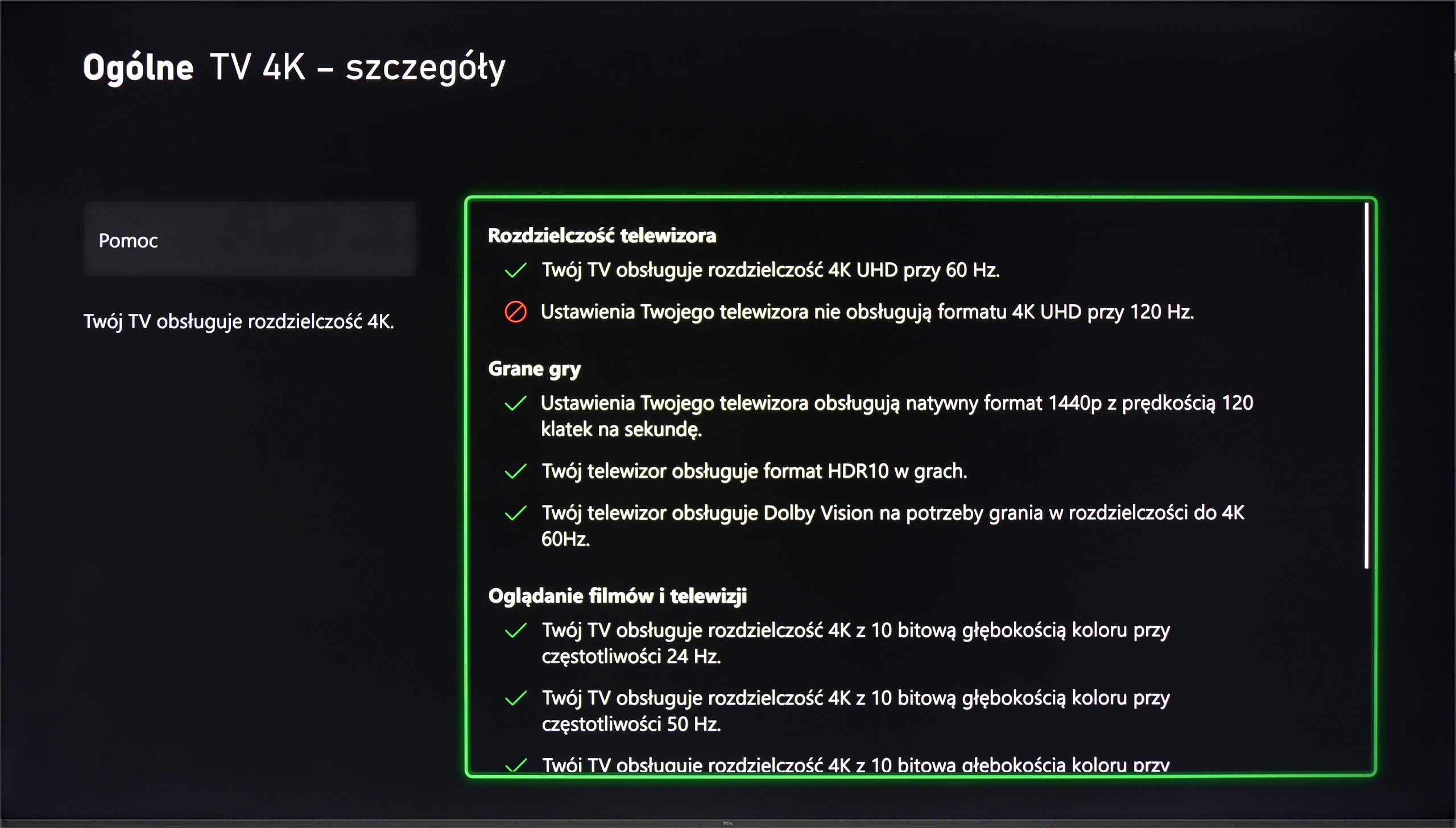
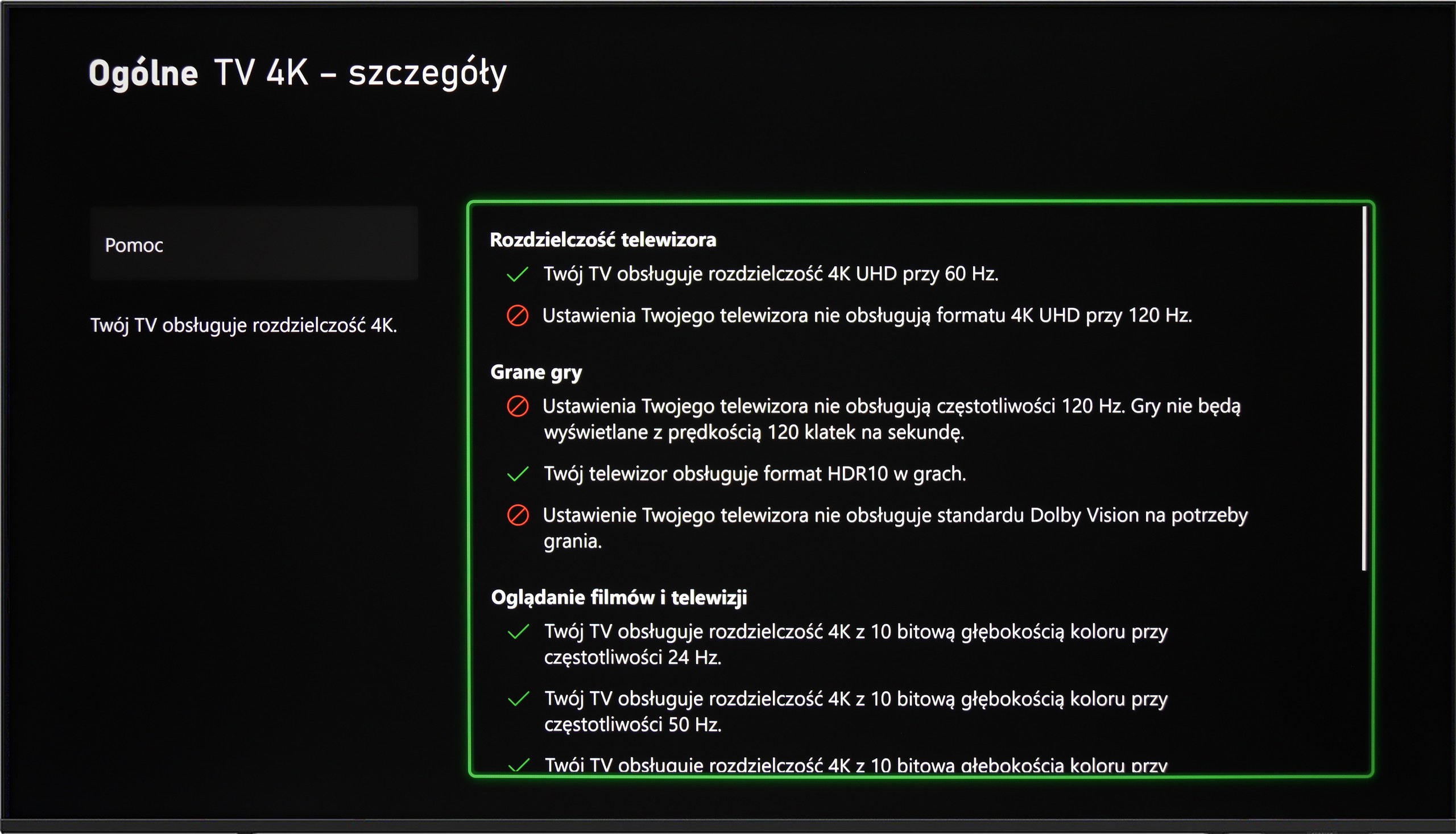
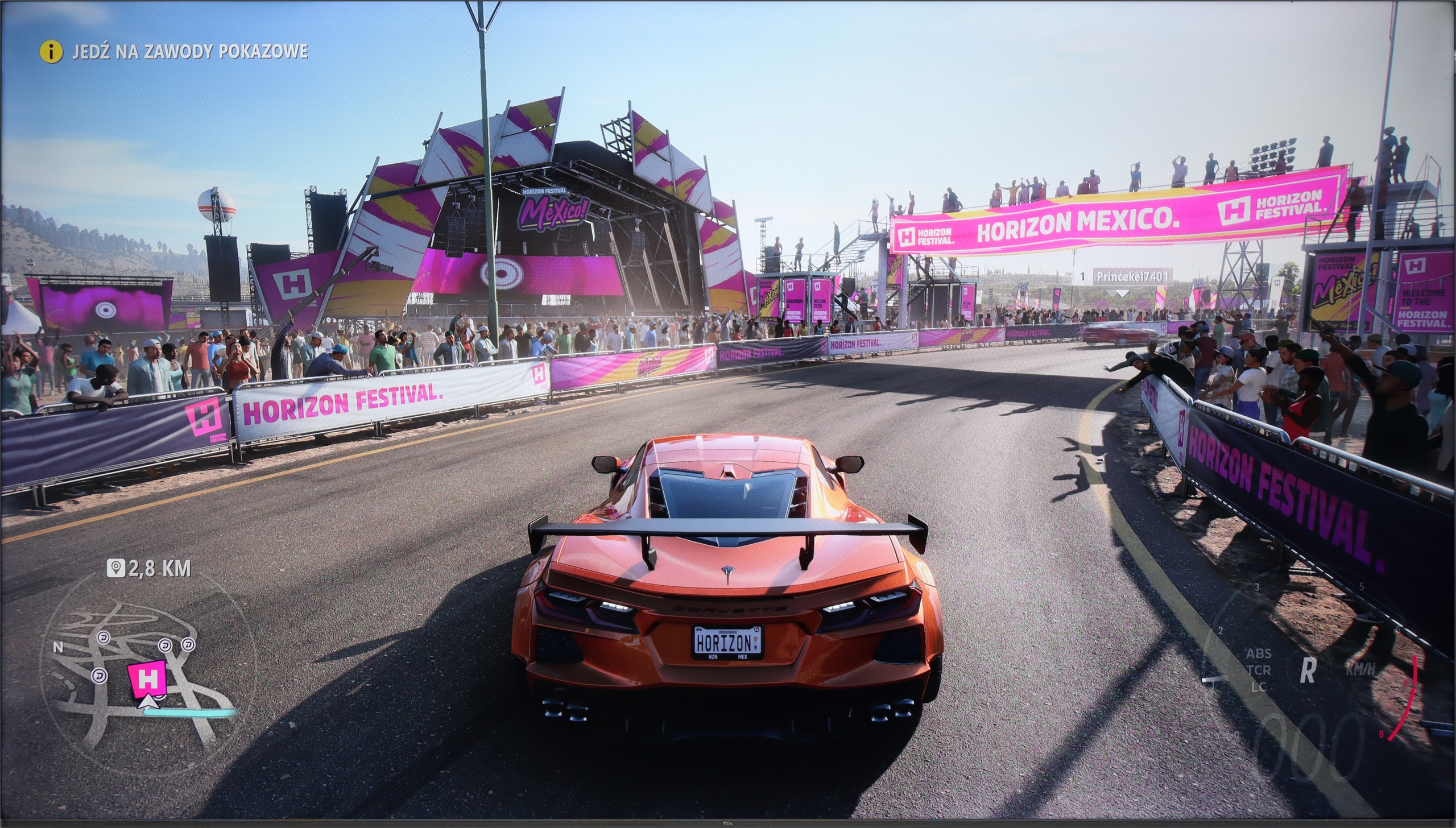
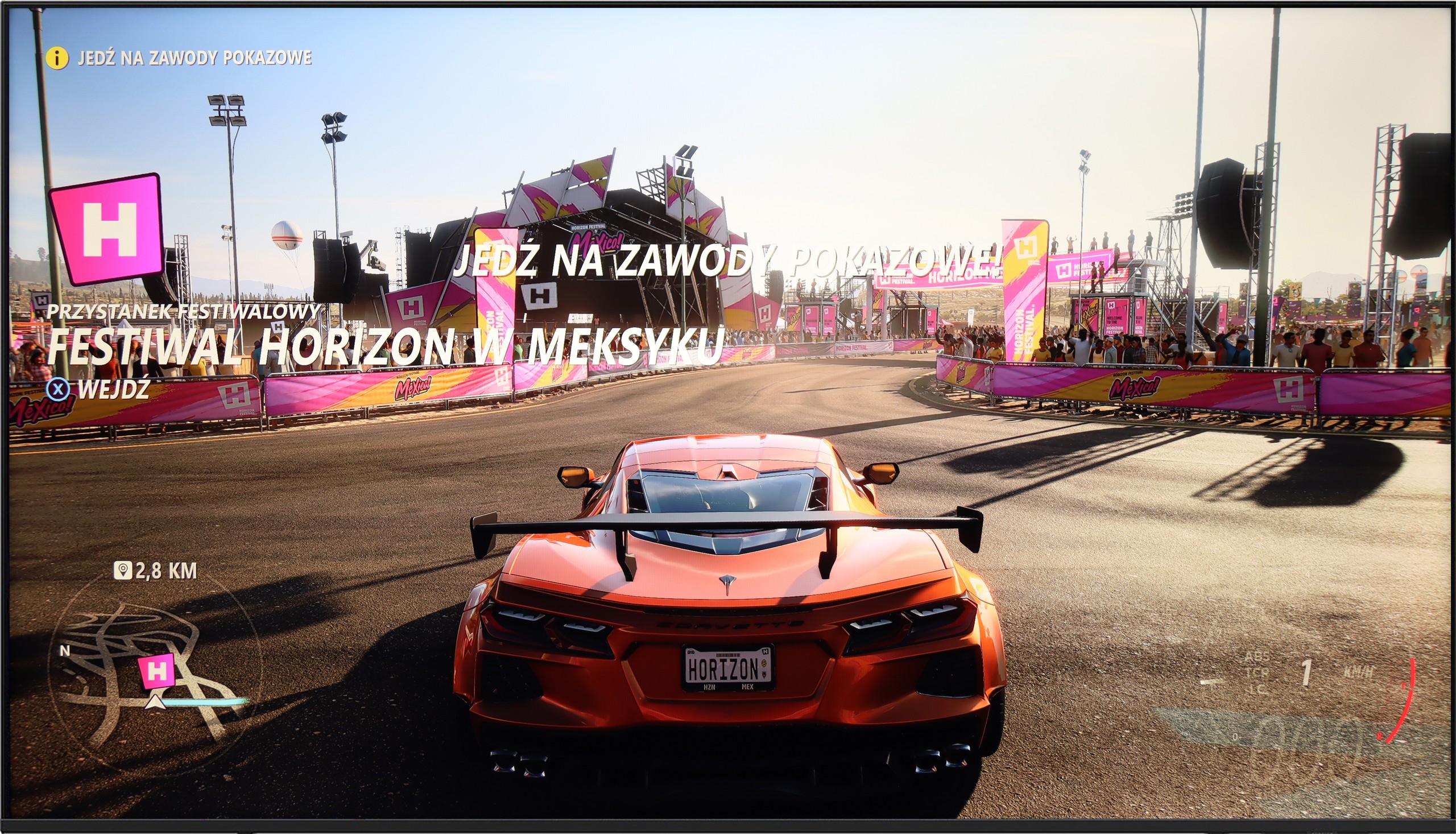
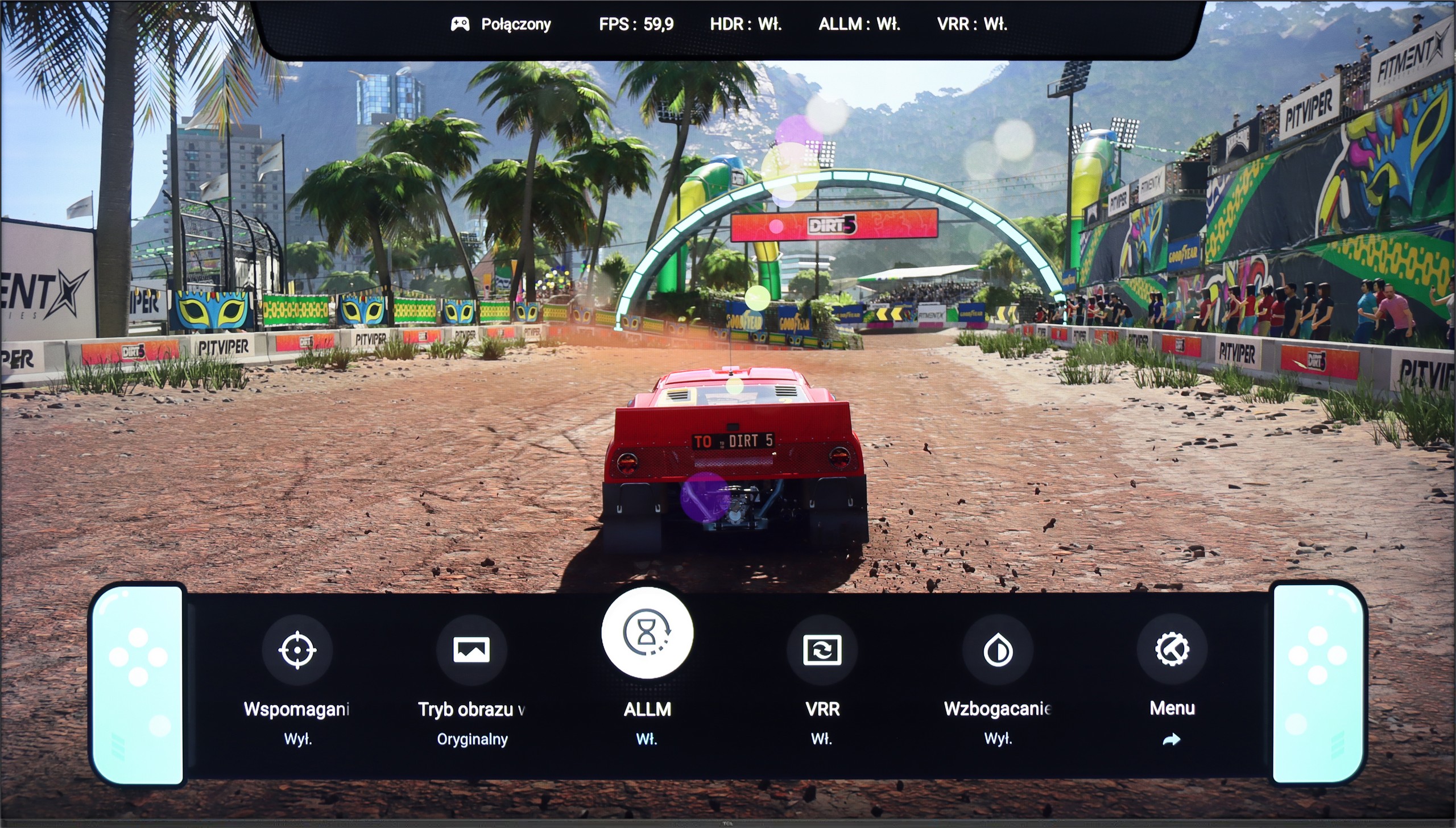
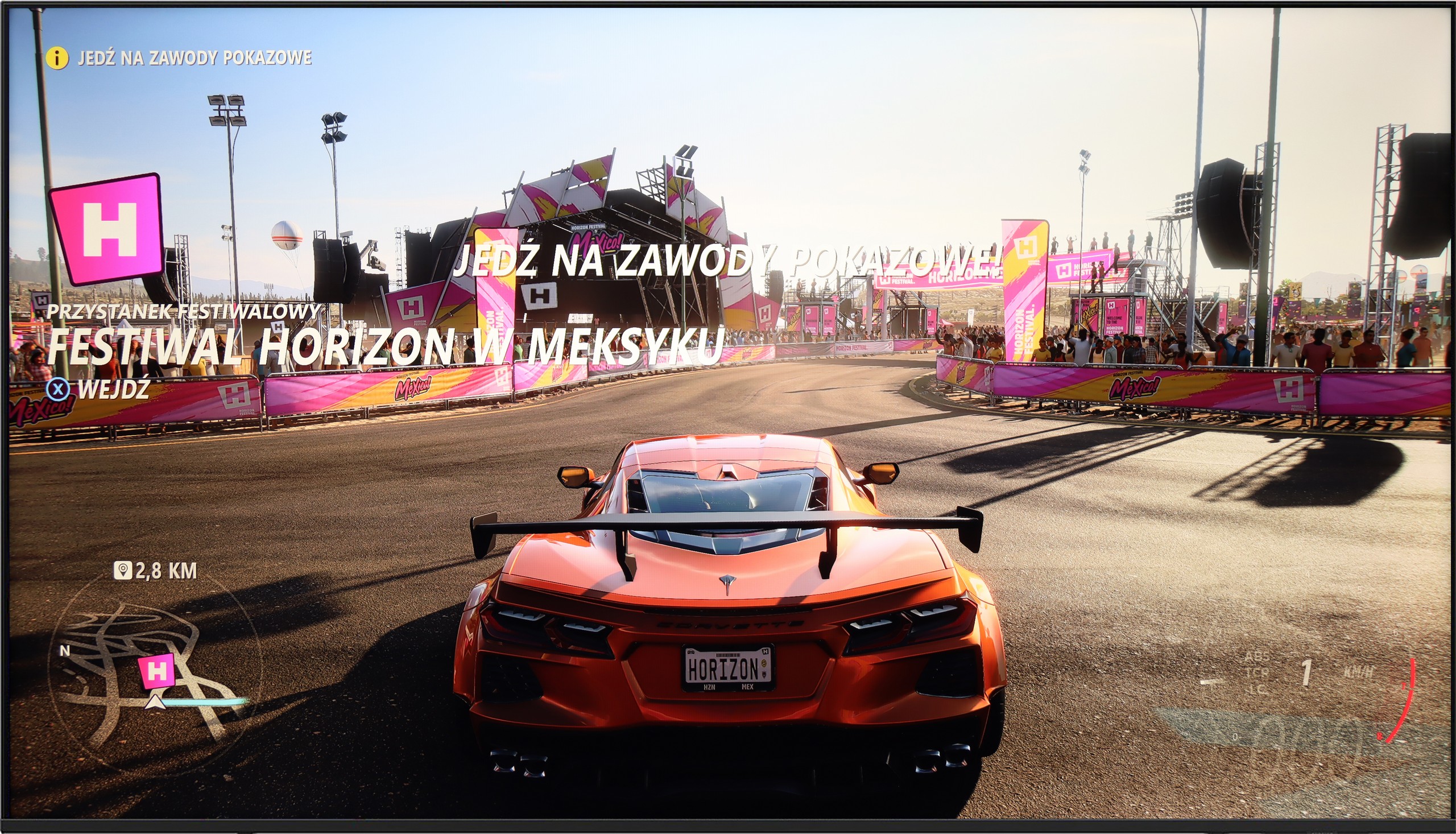
Although on paper the native 4K@60Hz matrix might suggest that the TCL P7K/P79K is not a TV tailored for gamers, the reality turns out to be surprisingly different. On the contrary, the manufacturer has ensured a rich package of features that make it a very friendly companion for next-generation consoles. Onboard, we find key technologies such as ALLM, which provides automatic switching to low-latency mode, and VRR, or variable refresh rate, which eliminates screen tearing. The list is completed by support for Dolby Vision Gaming and a simple yet functional Game Bar. However, the real and extremely pleasant surprise is something else. It turns out that the TV easily supports high refresh rate signals of 120 Hz, but at lower resolutions – 1080p and 1440p. This is fantastic news for console owners who know full well how rarely games run in native 4K at a full 120 frames per second. The ability to choose between higher resolution and doubled smoothness is therefore an extremely sensible compromise.
In summary, although the P7K/P79K may not be the target screen for the most avid tournament gamers, it offers a package of options for the casual or occasional console user that is hard to find among many competitors at this price point.
Samsung U8000F offers a basic set of features for gamers, which nonetheless may be sufficient for less demanding users. It has an automatic game mode – when a game is launched on the console, the TV automatically switches to low latency mode, significantly improving response time. It also includes a VRR feature, or variable refresh rate, which operates in the range of 48 to 60 Hz. This means that both Xbox and PS5 will not produce a "tearing" effect on the screen – as long as we stay within this range.
And unfortunately, that's about it when it comes to advantages. Additions like Game Bar or higher refresh rates are reserved for higher models of Samsung from the 2025 line. In theory, the TV also supports the HGiG function, which should adjust the HDR image to the intentions of game developers. Unfortunately – even though this feature appears in brochures and marketing materials – its configuration on the Xbox console turned out to be... impossible in practice.
Input lag
9.9/10
10/10
SDR
HDR
Dolby Vision
Complementing this rich package for gamers is a parameter that has a direct impact on comfort and performance in gameplay – input lag. Even in native 60 Hz mode, the television boasts an excellent result of just 15 ms. However, the real magic happens when switching to 120 Hz mode, when the lag drops nearly in half, reaching values below 10 ms. Such responsiveness means that every command from the controller is transferred to the screen in the blink of an eye, something not only professionals will appreciate, but anyone who values smooth and immediate interaction with the game.
In our tests, the Samsung U8092F performed phenomenally in terms of input lag. Regardless of the resolution, the results were very low, which is truly impressive for this price segment. Therefore, we can confidently say that gaming on this television will not cause irritation due to significant delays between what we do on the controller and what we see on the screen. For most gamers, even the more demanding ones, this result should be more than satisfactory.
Compatibility with PC
2/10
6/10
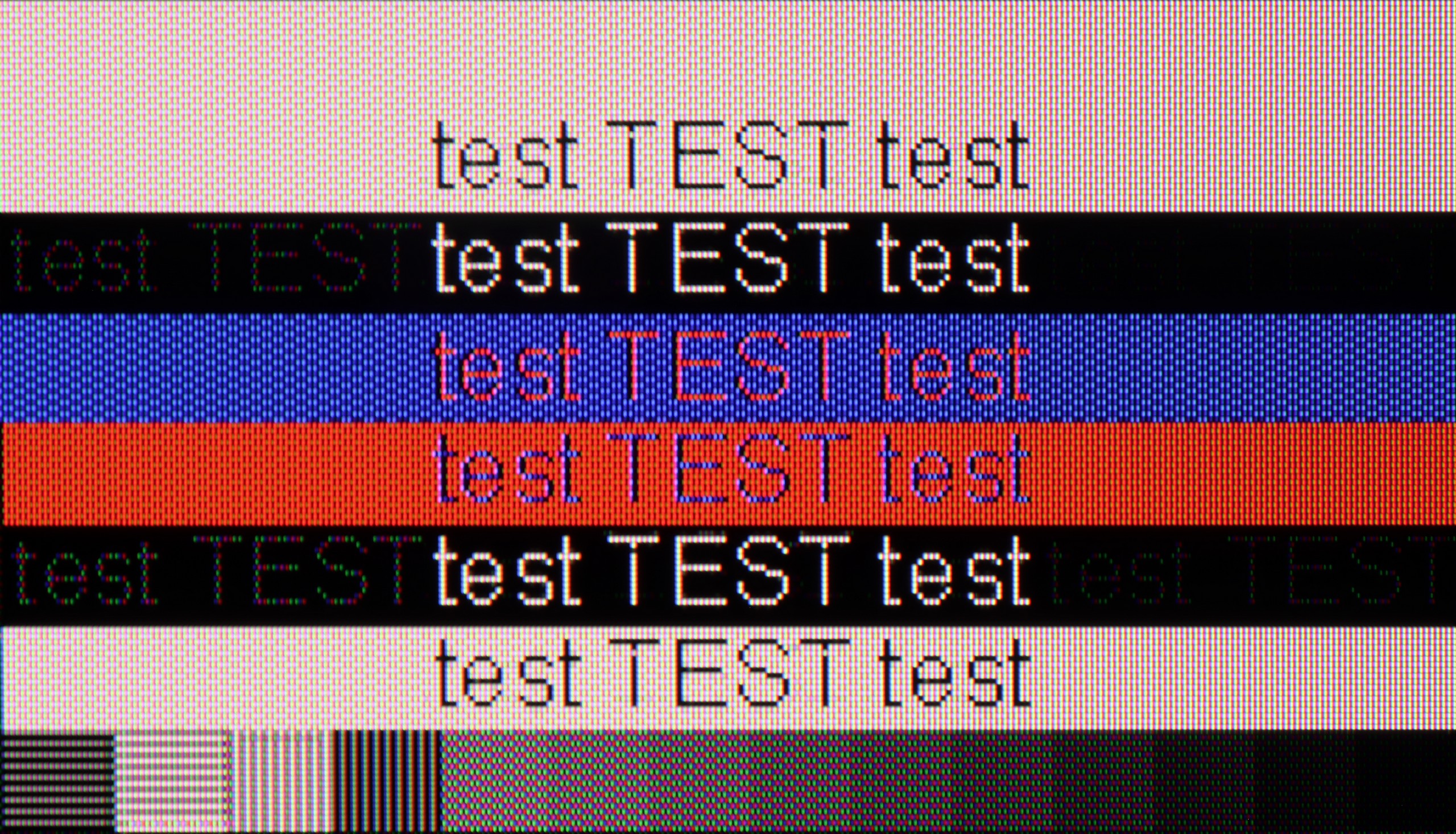
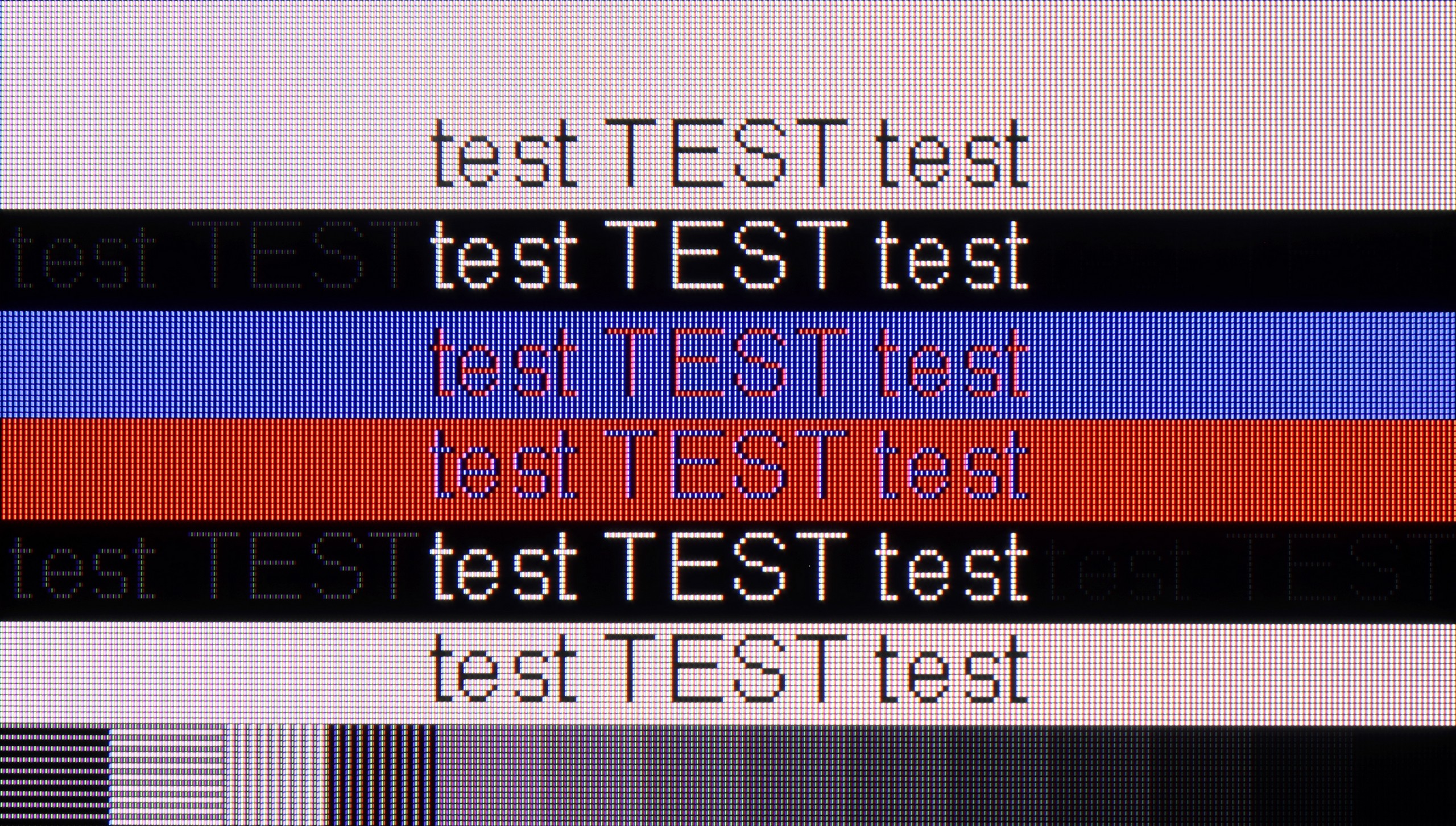
We finally come to an area that can undoubtedly be described as the biggest Achilles' heel of the TCL P7K/P79K – its cooperation with a PC. This is paradoxical because on paper, everything looks promising. The presence of G-Sync and support for high refresh rates at lower resolutions might suggest that it would also be a great monitor. Unfortunately, practice brutally verifies these assumptions. The key issue is the lack of support for full 4:4:4 chroma sampling. In everyday use, this translates to terrible font rendering quality – they, especially colorful ones, become jagged, surrounded by artifacts, and simply hard to read. This is not the end, as in PC mode, a significant issue with aggressive dithering also becomes evident, giving the entire image an artificial, overly digital appearance. The only consolation in this situation is the fact that in games, we can take advantage of additional hertz and G-Sync technology, but these are not benefits that could compensate for the fundamental shortcomings in displaying a static interface. The verdict is therefore clear: while it can still hold up as a screen solely for gaming on PC, in the role of a monitor for work or internet browsing, the P7K/P79K simply performs poorly.
Working on a computer using this television is a real pleasure. The Samsung U8092F supports chroma 4:4:4, and despite being a version with a VA panel, the readability of fonts is very, very good. The television is also suitable for occasional gaming on a PC, mainly due to its low input lag. However, one must take into account that the G-Sync feature does not work on this model, which is strange because VRR worked without problems when it came to the console.
Viewing angles
3.2/10
3.7/10
When it comes to viewing angles, we enter a territory where VA matrix technology dictates inevitable conditions. As expected, this is the weak point of this model. It is enough to move away from the screen's axis to observe a gradual degradation of the image: colors begin to fade, contrast noticeably drops, and black loses its depth. In direct competition with IPS panels, which are renowned for their generosity in this aspect, the VA matrix must concede superiority to its competitor. Is there a plus side to this? Paradoxically, yes. Poor viewing angles are, in fact, the price we consciously pay for the fundamental advantage of this technology – a significantly higher native contrast and deeper blacks when viewed head-on. So, one could say that this is a television that favors the viewer sitting in the "ideal" spot, offering them a maximally vibrant image at the cost of universality.
Daytime performance
4.6/10
3.8/10
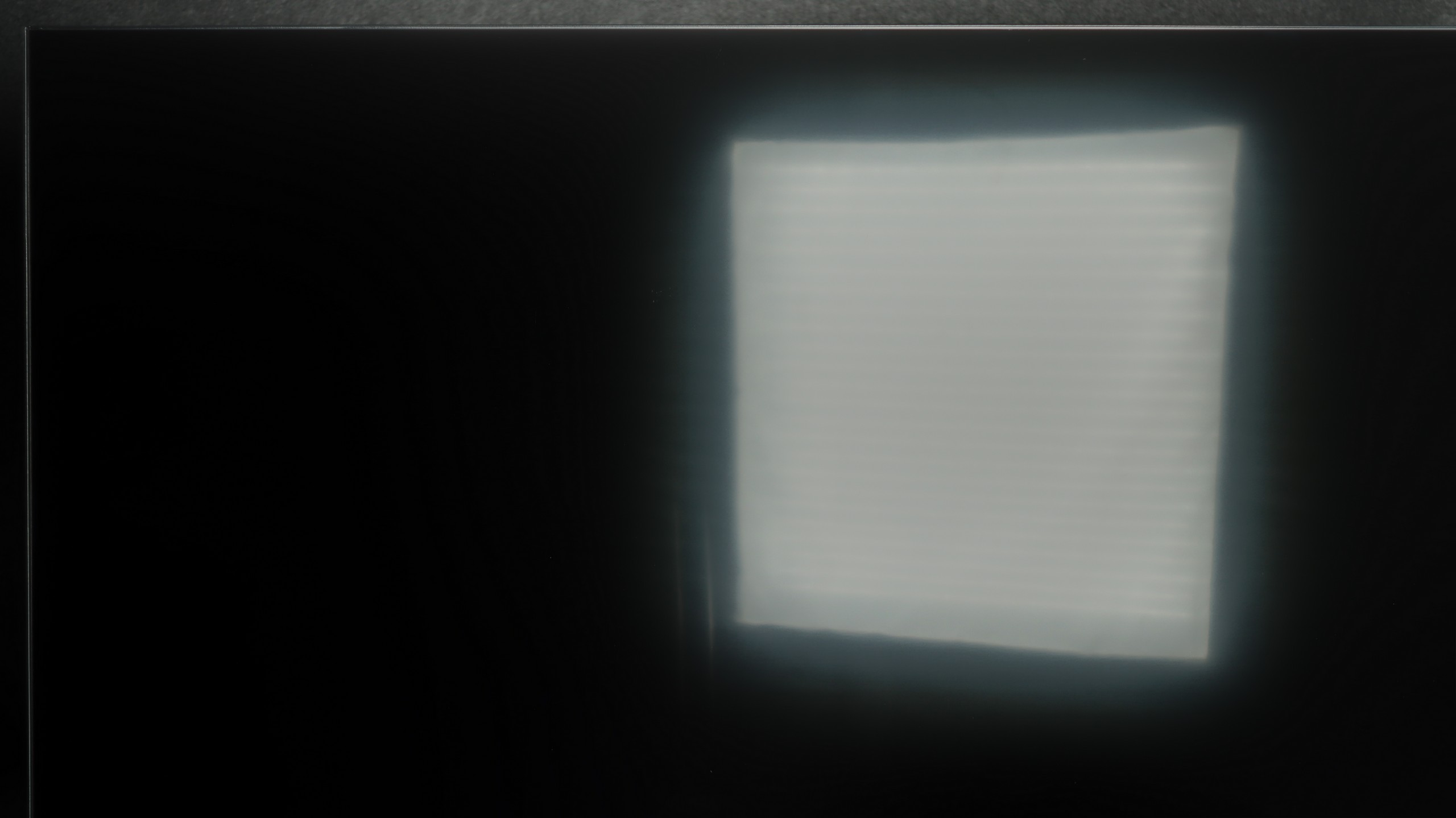
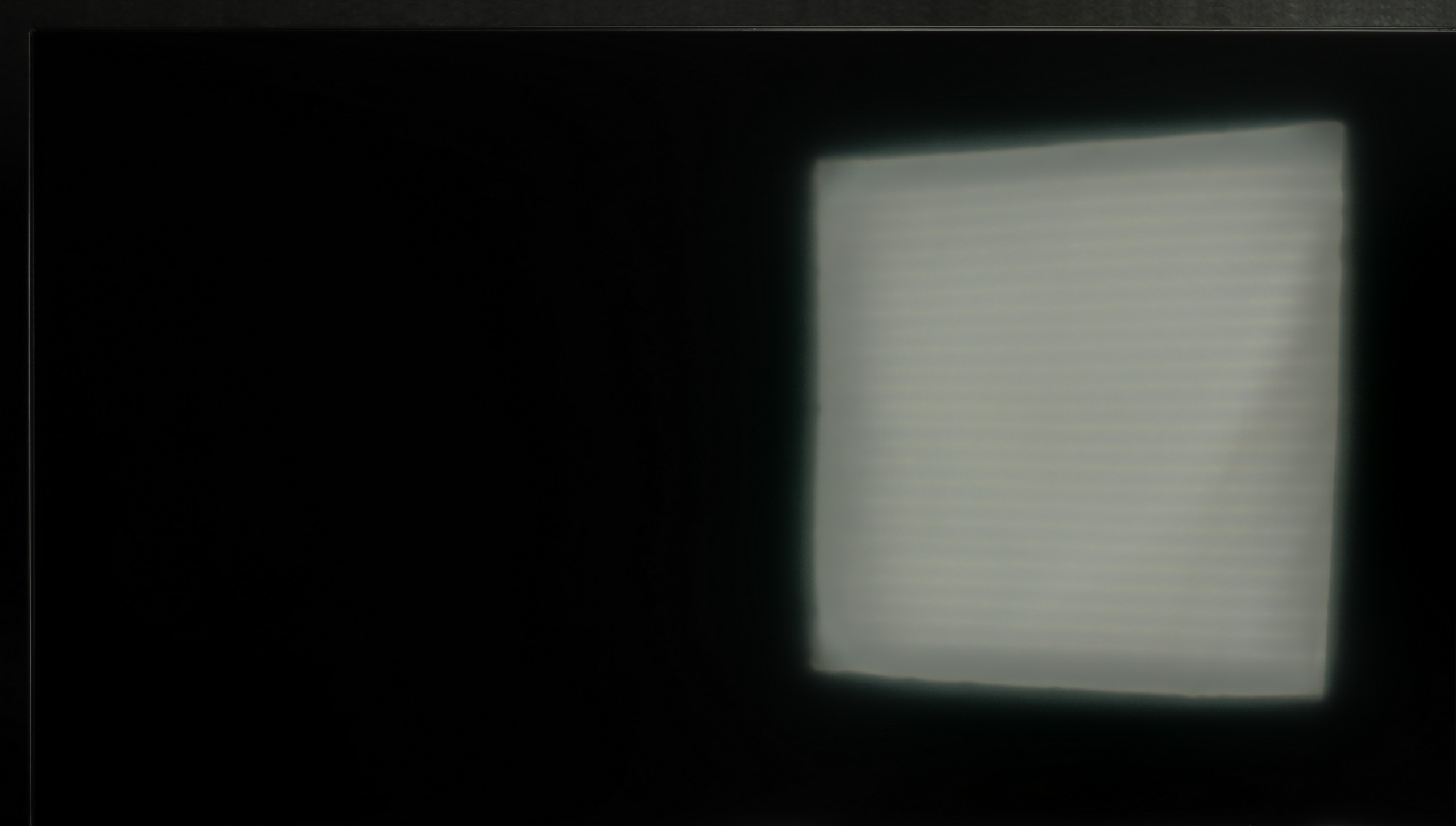


Panel brightness
Average luminance SDR
Samsung U8000F (VA): 204 cd/m2
TCL P7K / P79K: 299 cd/m2
The last practical test for any television is its daily performance in daylight conditions when it must compete with ambient light. In this competition, the TCL P7K / P79K has a slight advantage thanks to its satin screen coating. Its structure manages to quite effectively dampen direct reflections, dispersing them and protecting the image from excessive color fading or black brightness. However, passive combat with reflections is one side of the coin. The other is the active ability to "break through" bright surroundings, and here one of the key limitations of this model becomes apparent. The previously mentioned peak brightness of around 300 nits is simply too low to provide a fully comfortable and dynamic viewing experience in a brightly lit living room. In such conditions, the image may lack punch, and lower brightness scenes may lose clarity.
Thanks to the satin coating on the Samsung U8092F matrix, it does quite well at reducing reflections. The screen doesn't act like a mirror, and the colors – given the capabilities of this class of device – remain fairly saturated, even in somewhat brighter conditions. Unfortunately, the coating alone won't work miracles. The television is simply too dark to effectively cut through very difficult lighting conditions. If we place it against a light source (e.g., a large window or a strong lamp) – unfortunately, we have to reckon with the fact that not everything will be visible on it.
Panel details
Subpixel Structure:
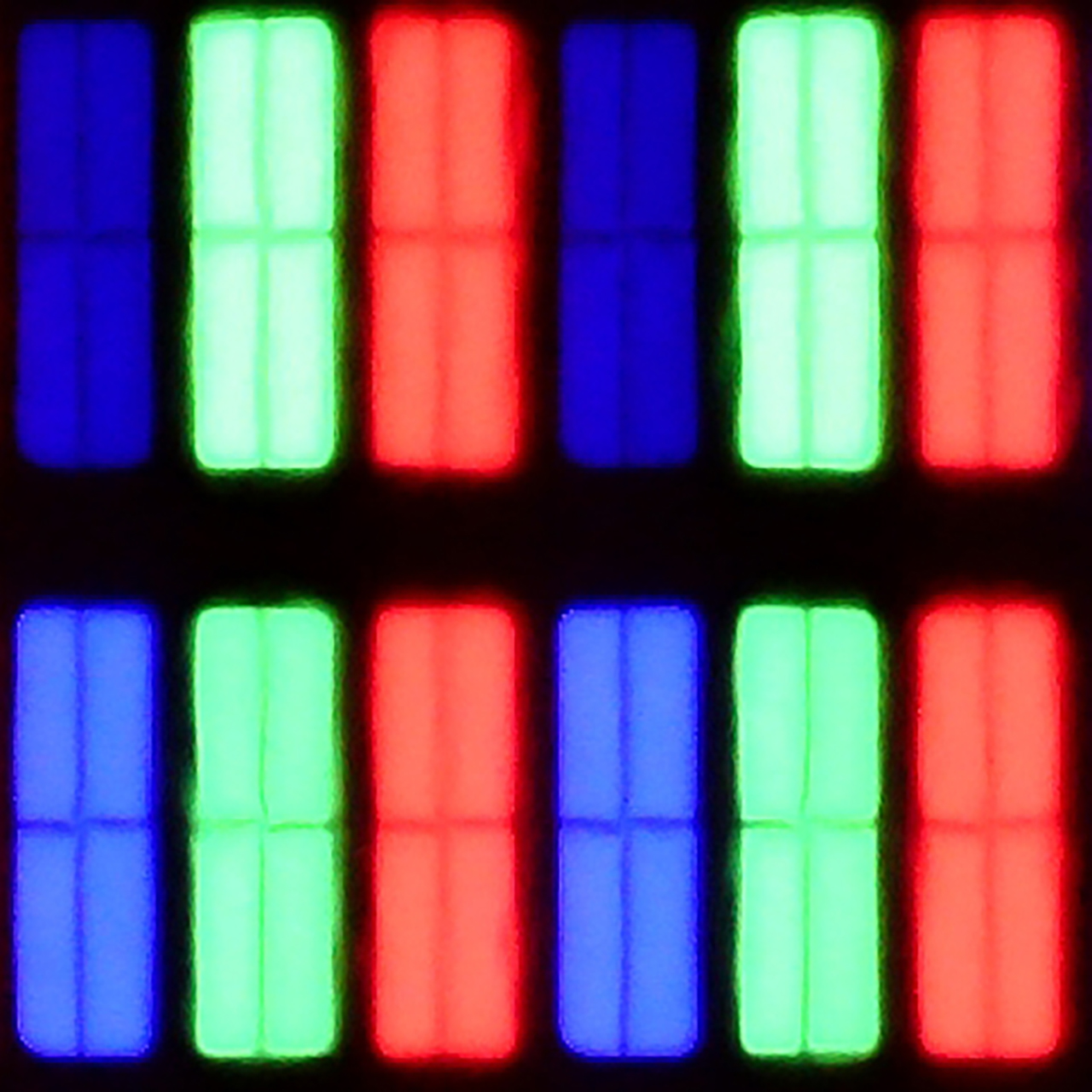
Panel uniformity and thermal imaging:

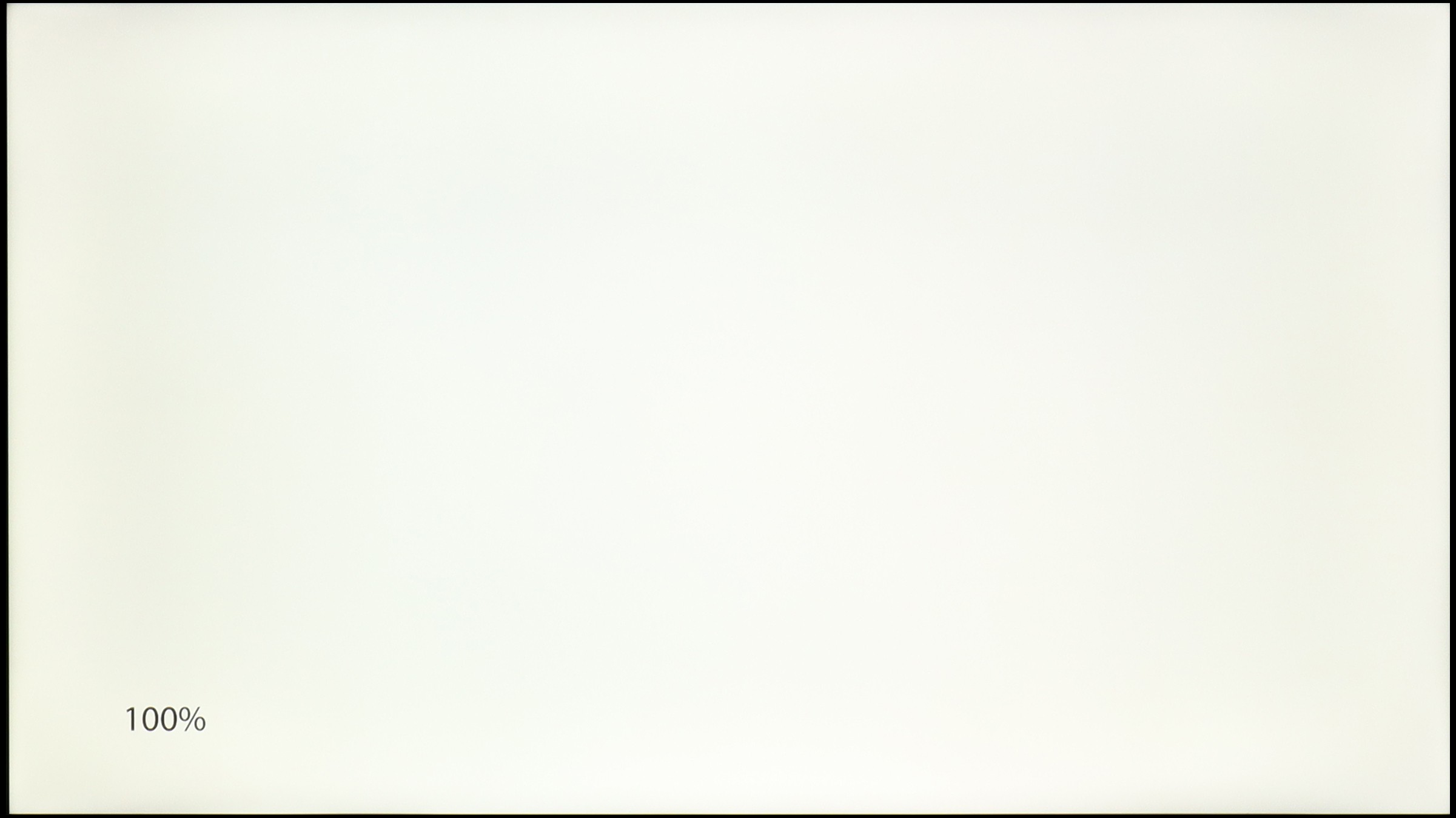
TV features
7/10
5.3/10
- HDMI inputs0 x HDMI 2.0, 3 x HDMI 2.1 48Gbps3 x HDMI 2.0, 0 x HDMI 2.1
- Other inputsToslink (Optical audio)
- OutputsToslink (Optical audio), eARC (HDMI), ARC (HDMI)eARC (HDMI), ARC (HDMI)
- Network InterfacesWi-Fi 2.4GHz, Wi-Fi 5GHz, Ethernet (LAN) 100MbpsWi-Fi 2.4GHz, Wi-Fi 5GHz, Ethernet (LAN) 100Mbps
- TV receptionDVB-T, DVB-T2, DVB-S, DVB-S2, DVB-CDVB-T, DVB-T2, DVB-S, DVB-S2, DVB-C
Classic features:
- Recording to USB (terrestrial TV)
- Recording programming
- Picture in Picture (PiP)
- RF remote control (no need to aim at the screen)
- Backlit remote control
- Teletext
- Audio only mode
- Bluetooth headphones support
- Simultaneous Bluetooth headphones & TV audio
Smart features:
- AirPlay
- Screen mirroring (Windows Miracast)
- Voice search
- Voice search in native language
- Ability to connect a keyboard and mouse
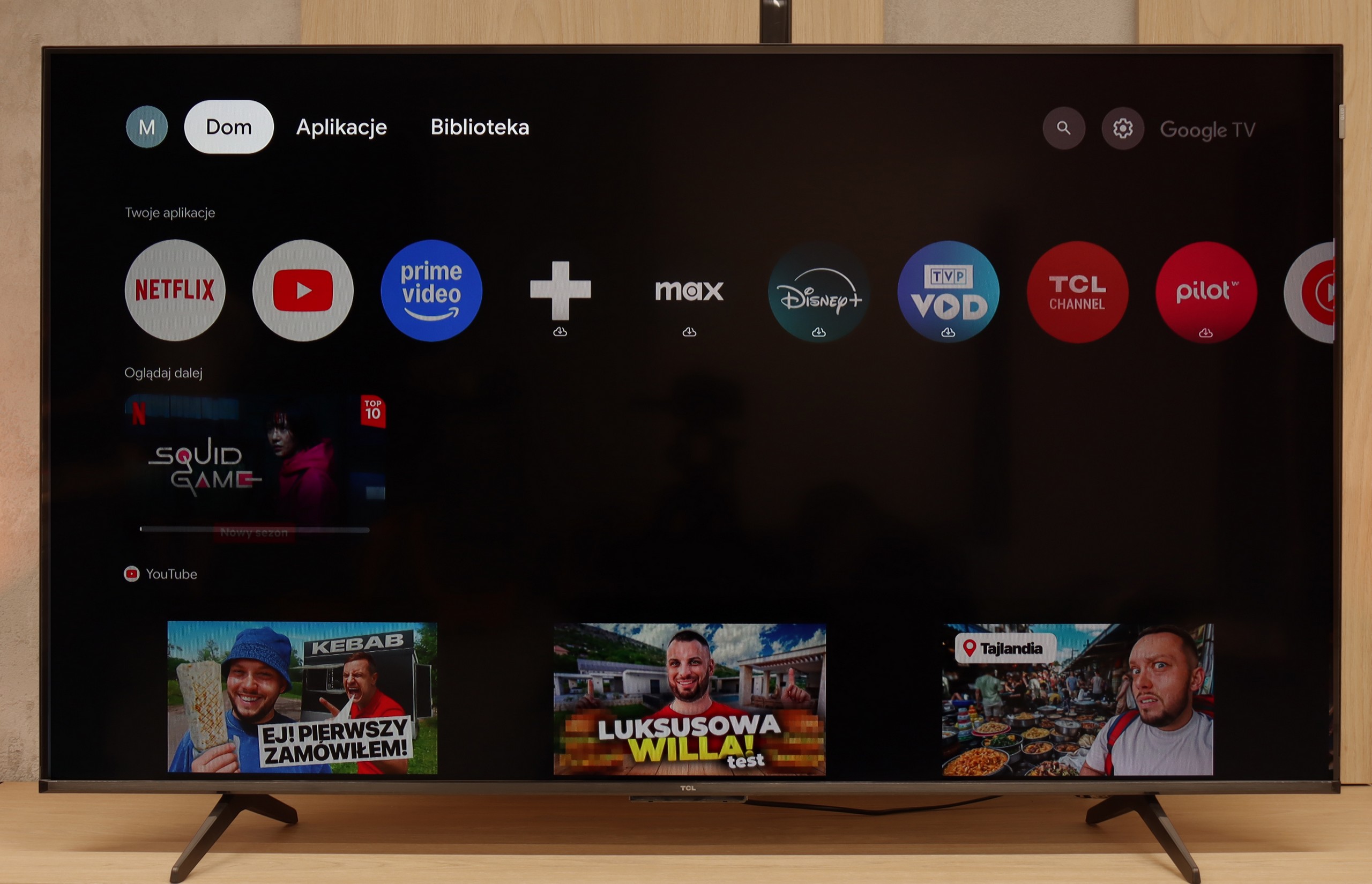
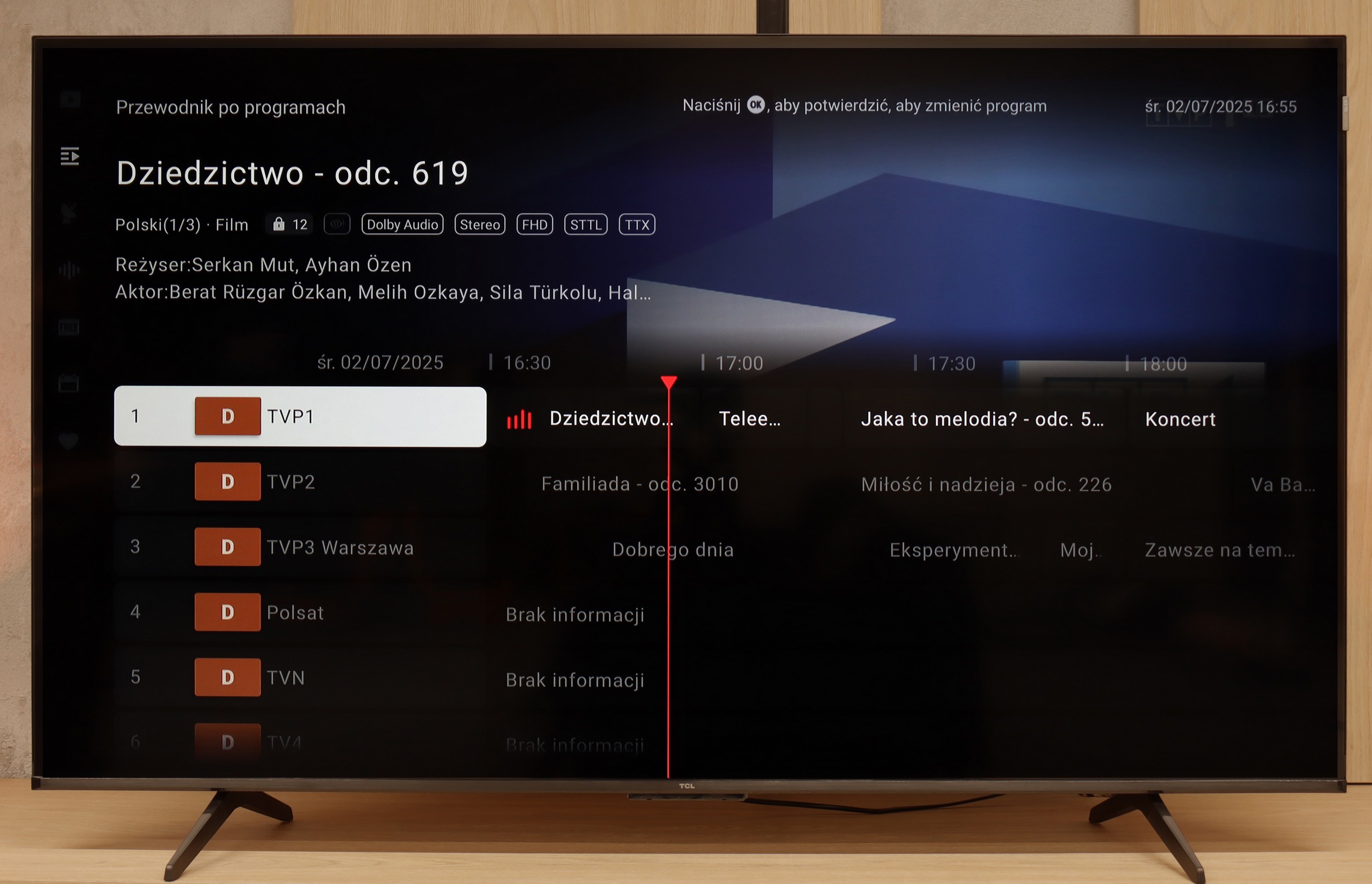
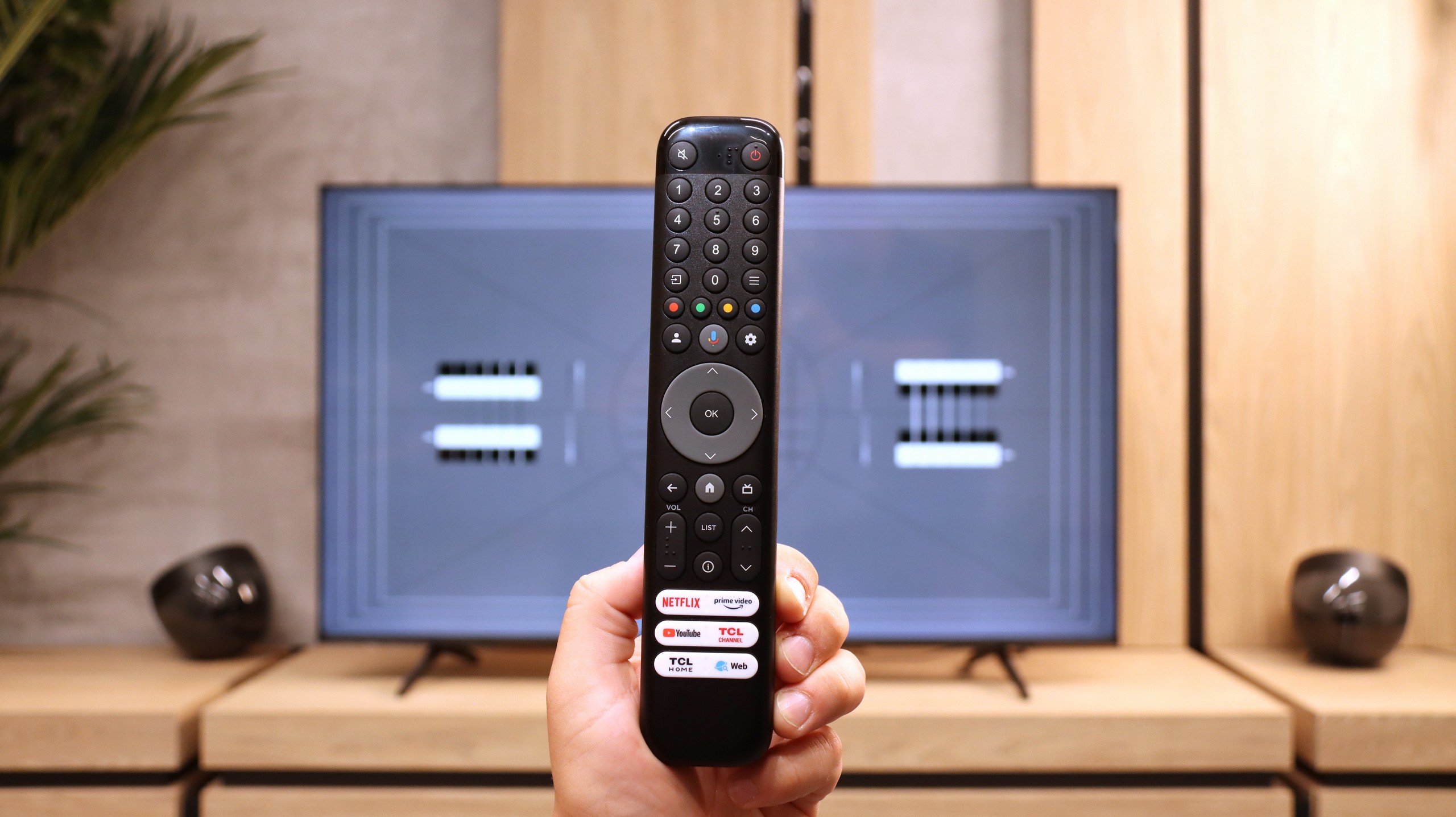
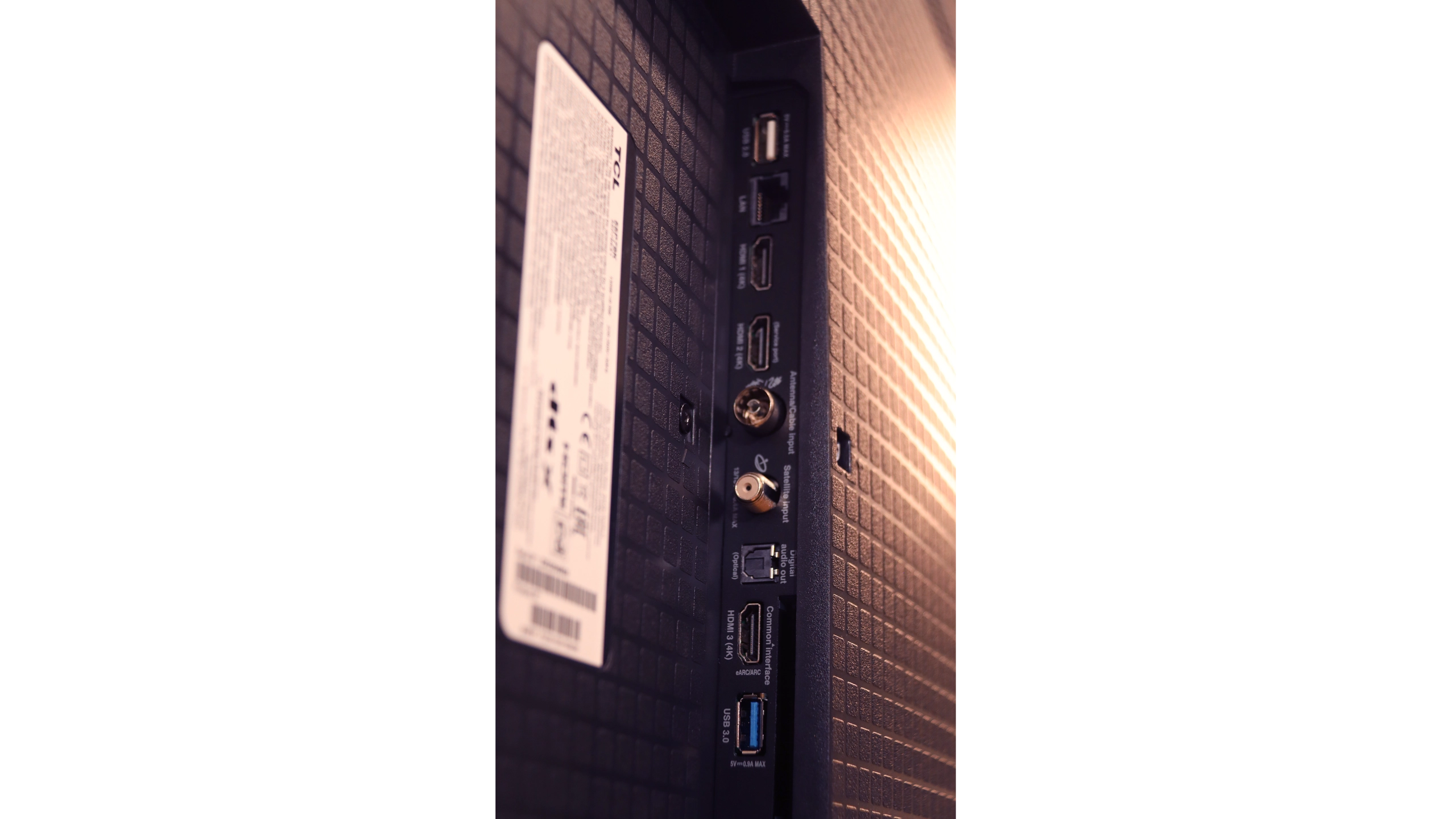
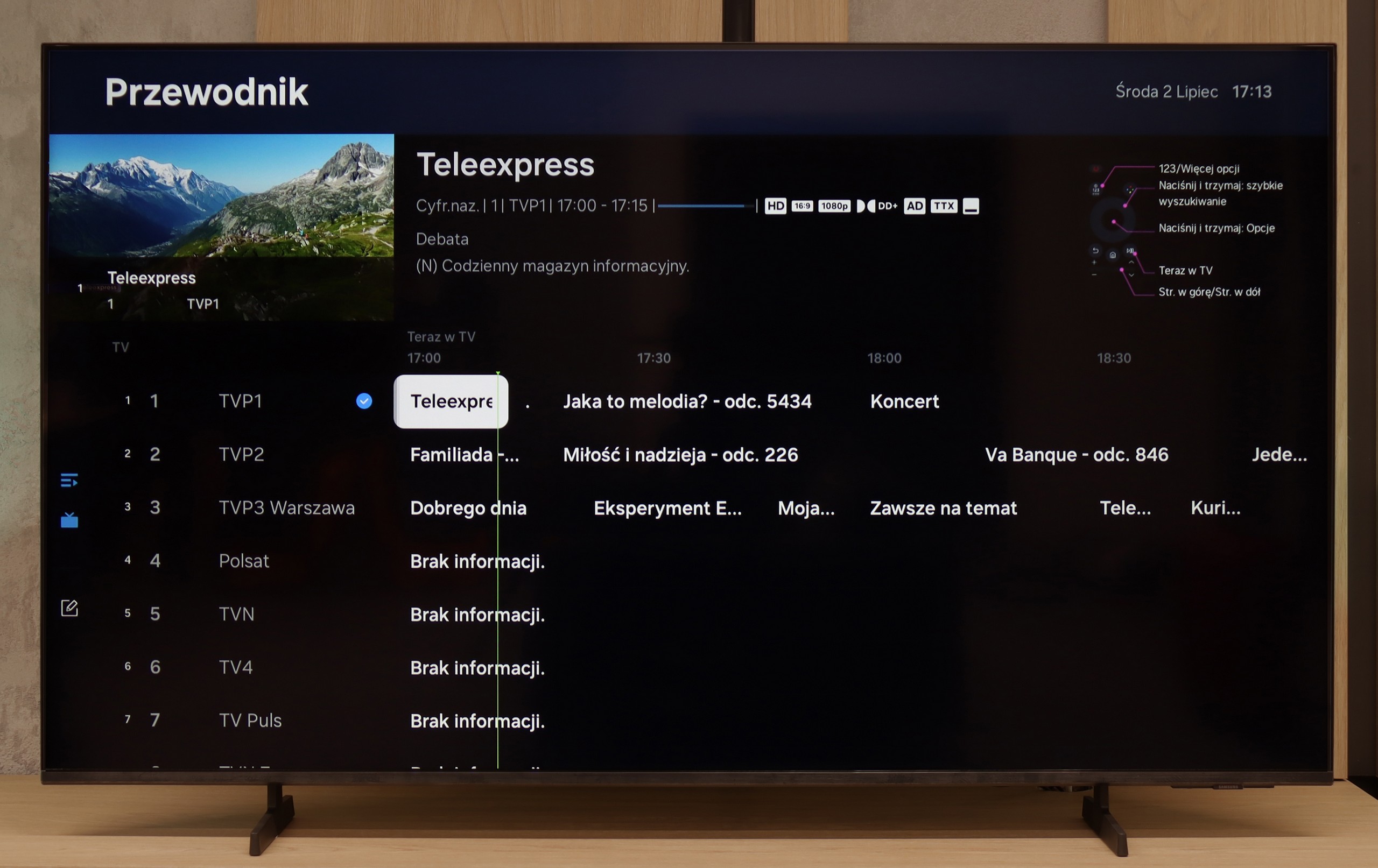
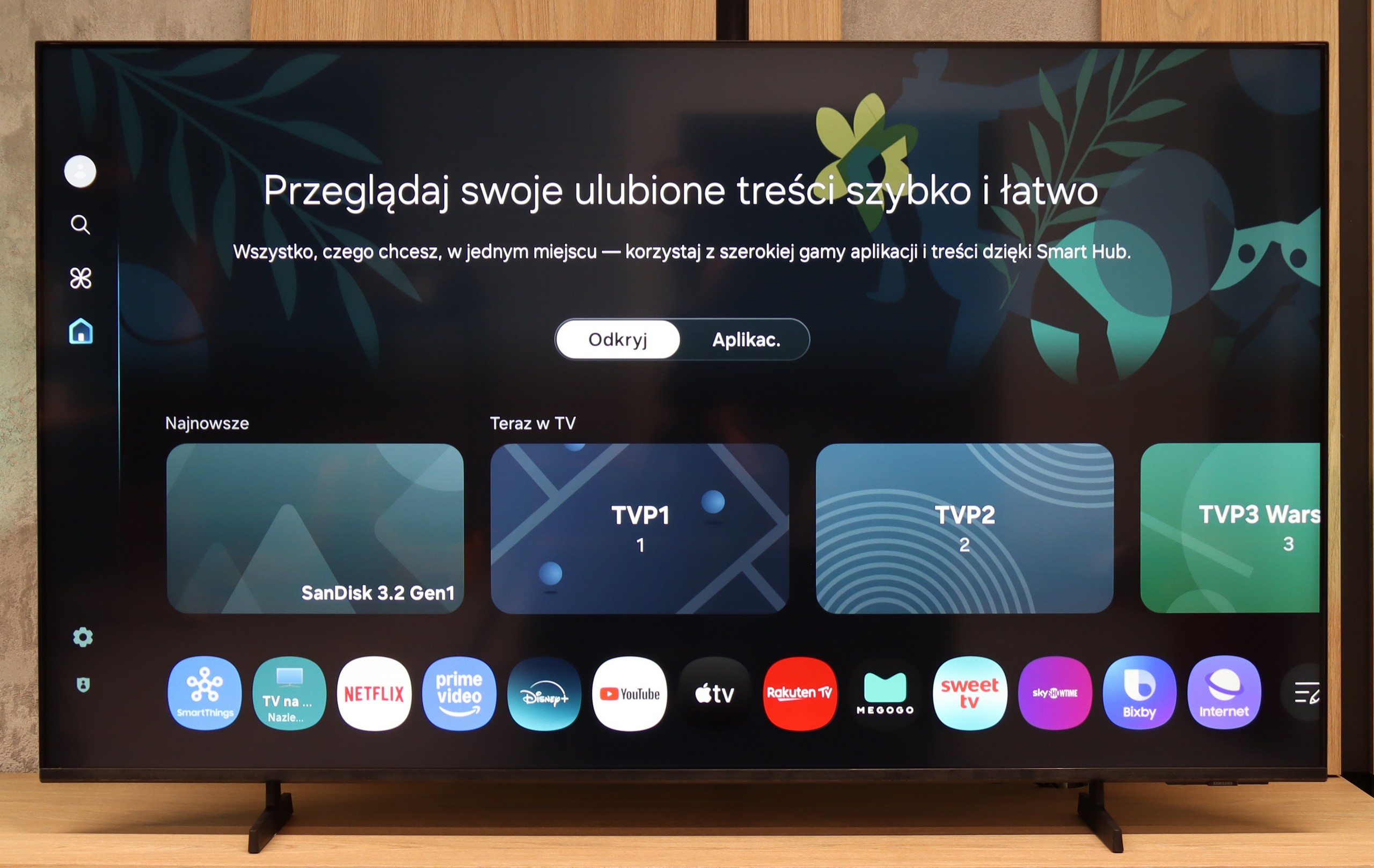
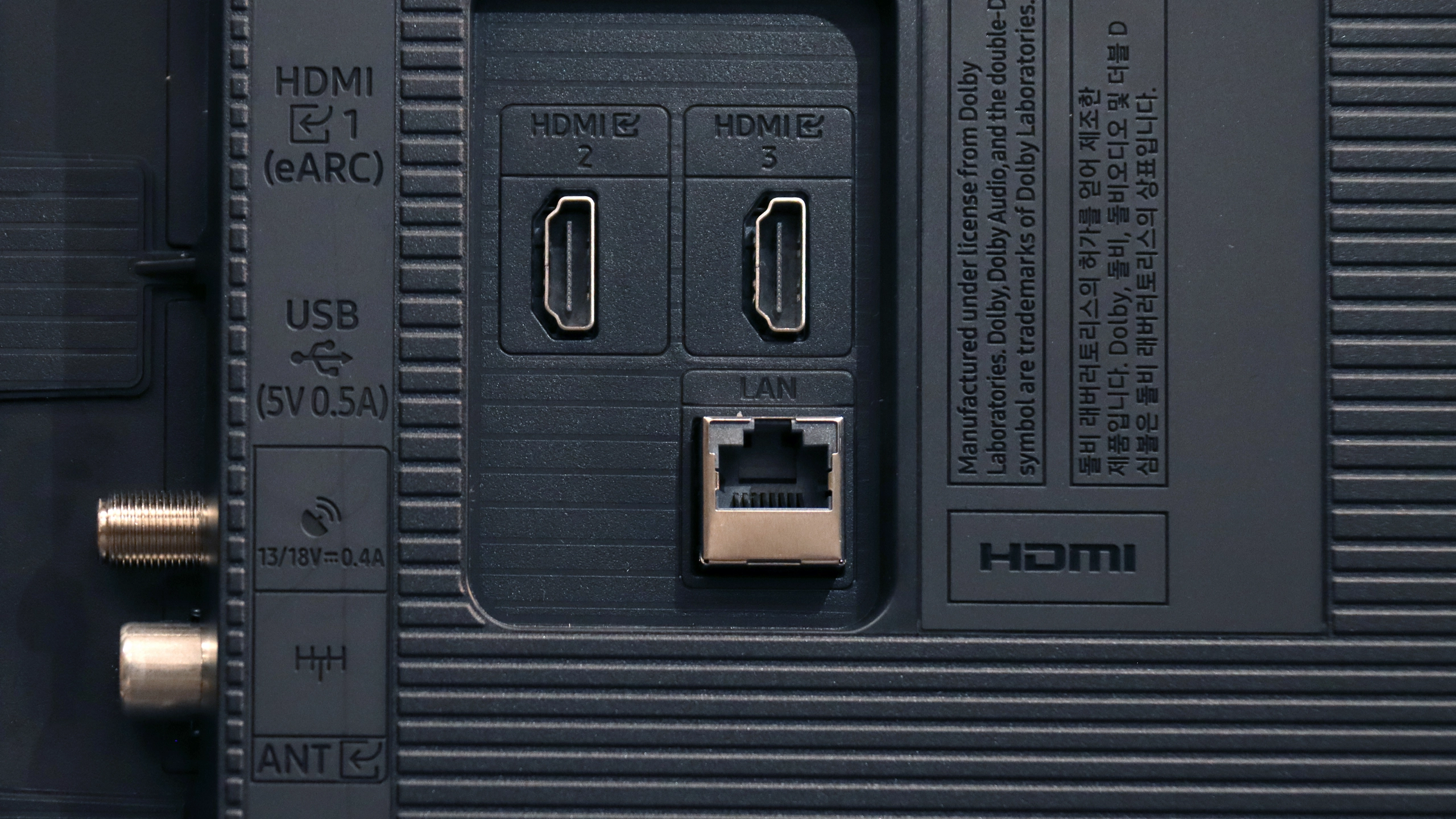
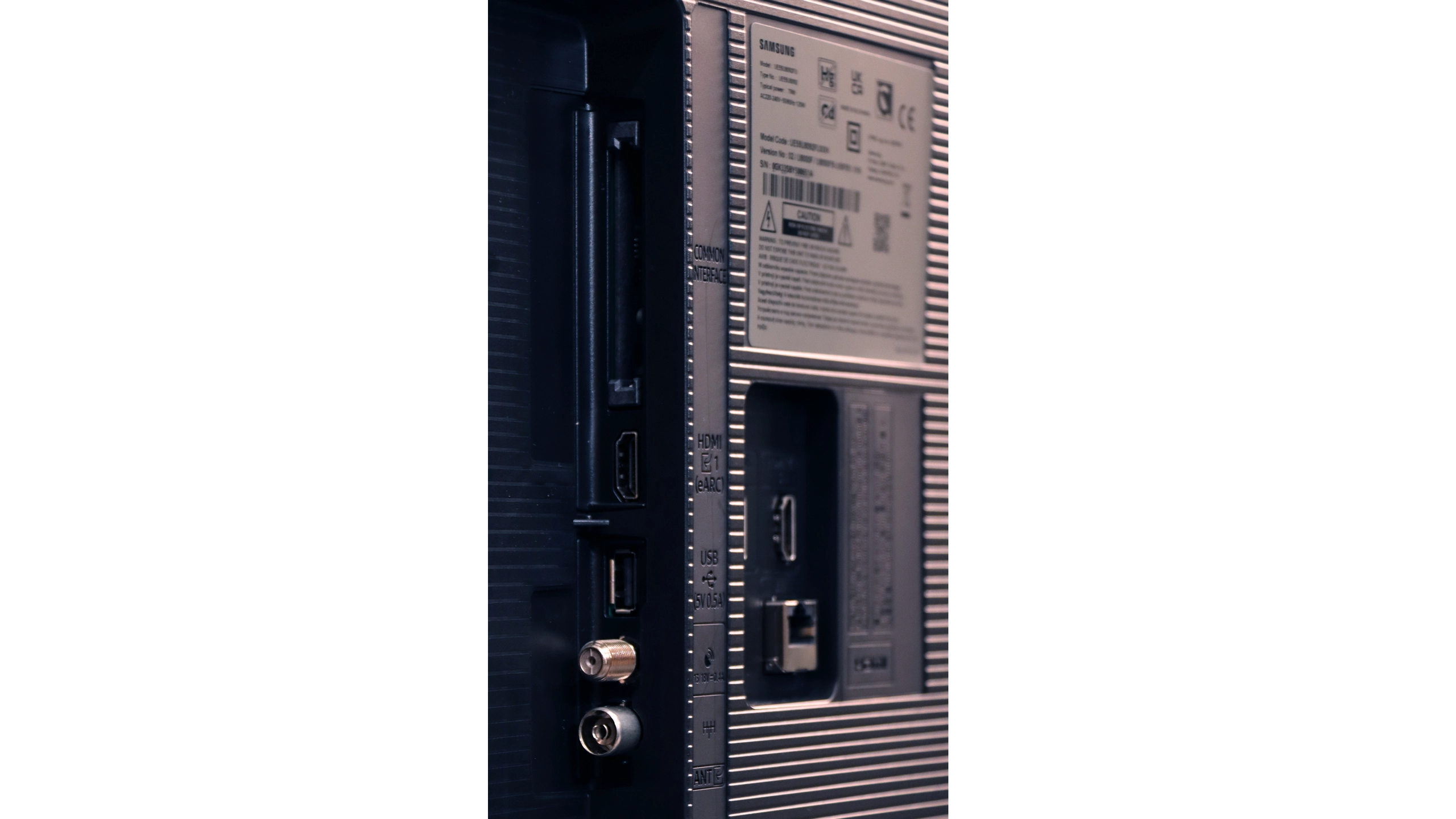
Smart Features – the Power of Google TV
The heart and brain of the TCL P7K / P79K is the Google TV system, which in itself is a huge advantage. This platform provides access to an almost endless library of applications from the Play Store, ensuring that we won't be missing any key streaming service. Integration with other devices is exemplary – Apple device owners will appreciate the seamless cooperation via AirPlay, while Windows and Android users will easily take advantage of the screen mirroring feature. It is also worth highlighting the Google Assistant, which performs fantastically with voice searches in Polish, remaining one of the most effective and convenient solutions of its kind on the market. The operation of the system on the tested model can be described as "average plus." The interface is mostly smooth, but during testing, it experienced occasional slowdowns and even sporadic "freezes" requiring a moment of patience. Minor hiccups are also visible in the translation of some system messages, which can be awkward – however, these are just small oversights on TCL's part, not affecting overall functionality.
Classic Features
In the age of smart systems, traditional television functions often take a back seat, and this is also the case here. A significant advantage is the inclusion of a classic remote control with a numeric keypad, which does not require precise aiming at the screen for communication, greatly enhancing user comfort. The presence of Bluetooth technology for connecting external devices, like headphones or speakers, should also be noted positively. However, this is where the list of conveniences basically ends. It is evident that TCL has placed nearly everything on the Google TV card, treating classic functions as an absolute minimum. Therefore, we will not find the option to record programs from built-in tuners to a USB drive or the once-popular PiP (Picture-in-Picture) feature. This is therefore a basic package that simply works, but does not offer anything beyond what is necessary.
Samsung U8092F – like all this year's models from this brand – runs on the Tizen operating system. The system itself is really well-developed: we have access to many applications (though not all), a well-developed smart home integration, and various extras, including exclusive Samsung apps. It also includes features like AirPlay and Chromecast, which make it easy to connect your phone to the TV and share media.
Unfortunately, as this is Samsung's cheapest series in 2025, the manufacturer did not include a solar remote control. In the package, we find a classic infrared remote control that visually resembles a newer version, but unfortunately lacks voice functions. Regarding typical "TV" extras – it lacks a recording feature and a PiP mode (picture in picture). On the plus side, however, is HDMI eARC, which allows for easy control with the included remote, for example, a decoder or soundbar – and it actually works seamlessly.
Playing files from USB
7.2/10
9.3/10
Supported photo formats:
Maximum photo resolution:
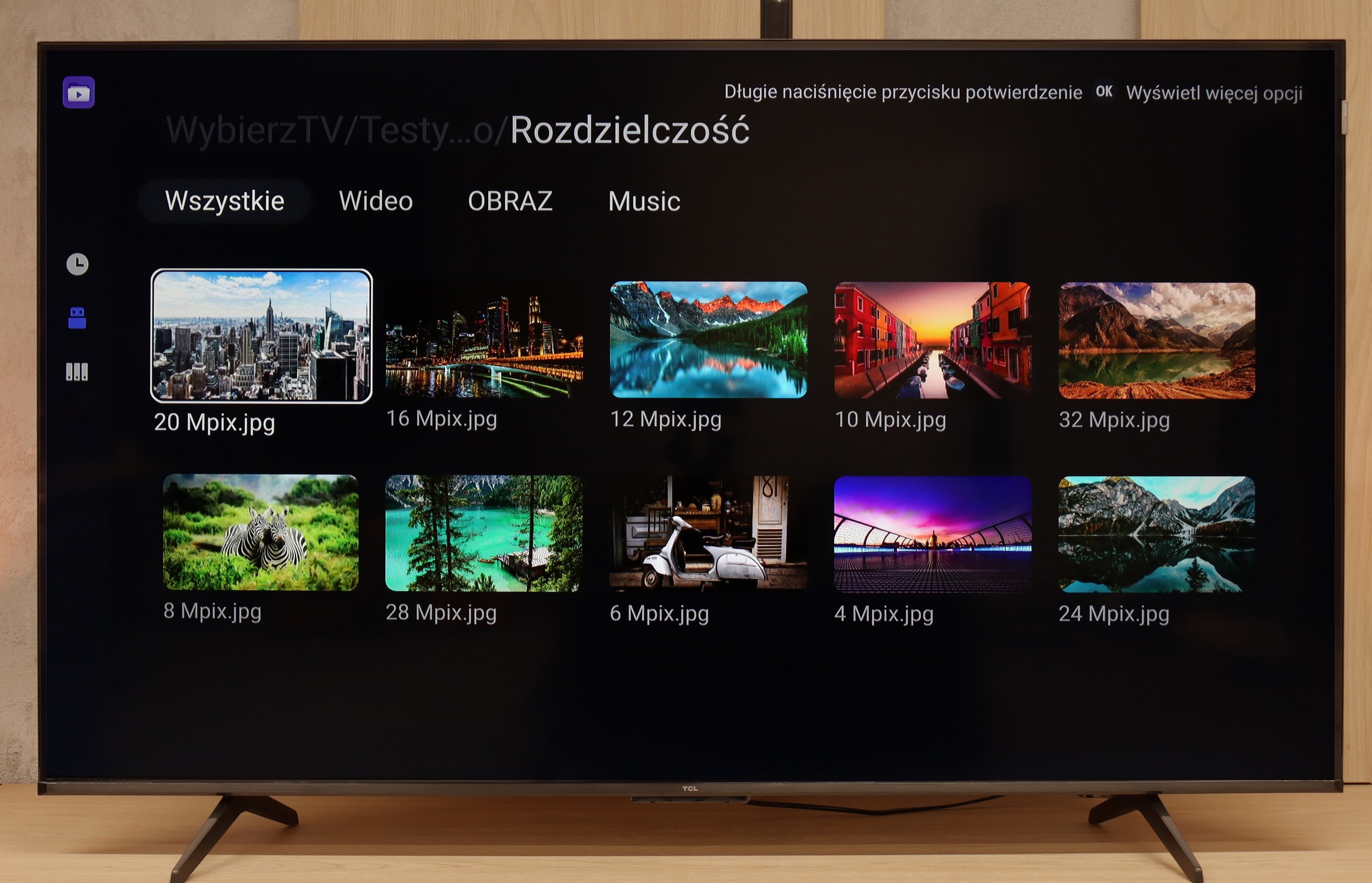
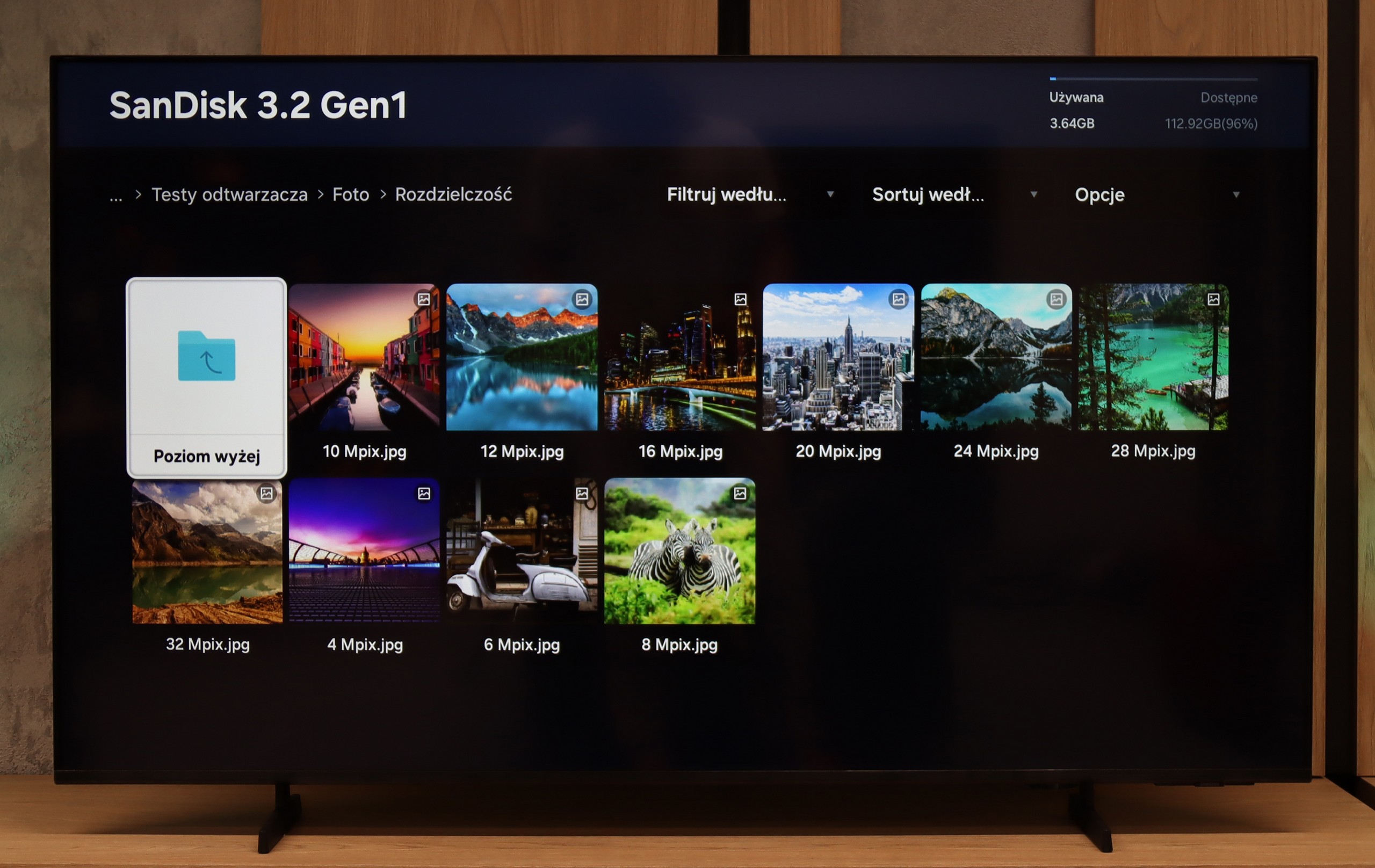
The built-in media player in the P7k/P79k model is at least a puzzling case, putting us in quite an unusual situation. On one hand, its engine handles decoding most popular video formats, which is obviously good news. On the other hand, we encountered a surprising and irritating issue – the default application has a fundamental problem displaying Polish diacritical characters in subtitle files correctly. Instead of letters like "ą", "ę", or "ż", empty squares or random, unreadable symbols appeared on the screen. Fortunately, thanks to the flexibility of the Google TV system, this problem can be easily circumvented. Installing an alternative, advanced player, such as the reliable VLC or KODI, completely resolves this inconvenience. The situation is peculiar because this flaw did not occur in other TCL models we tested previously. We are therefore dealing with a clear software oversight, which, hopefully, will be fixed in a future update.
Samsung U8092F handles playback of files rather smoothly – the television supports most popular audio and video formats. Of course, it does not support Dolby Vision, but we simply won’t find that in any Samsung model.
Some reservations can be made about the support for external text files – those that the user would like to add as subtitles to a movie. During our tests, the television only played TXT files, and other extensions, such as SRT or SUB, unfortunately did not work. This may not be a problem for everyone, but it is worth knowing. Perhaps this is an issue to be improved in the future with a system update for the television.
Apps
9.6/10
8.7/10














































Sound
6.2/10
5.7/10
- Maximum volume-81dB
- Dolby Digital Plus 7.1
- Dolby True HD 7.1
- Dolby Atmos in Dolby Digital Plus (JOC)
- Dolby Atmos in Dolby True HD
- DTS:X in DTS-HD MA
- DTS-HD Master Audio
In terms of the built-in audio system, the TCL P7k/P79k presents a level that can be described as functional and correct, but lacking audiophile ambitions. The speakers play quite loudly, and dialogues in movies and TV shows are conveyed clearly and without distortion, which is crucial in everyday use. However, the soundstage definitely lacks a foundation in the form of low tones. This is a direct consequence of the absence of a dedicated subwoofer – an element that in the higher P8K series, with a large Onkyo subwoofer at the back of the cabinet, defined the strength of its sound. Here, that element is simply missing, making the sound seem flatter and lacking the depth that creates a cinematic atmosphere. We also noticed a peculiar feature in the software – when trying to set the maximum volume, the TV automatically reduces it. It's hard to conclusively determine whether this is a form of protection against distortion or a minor software bug; nonetheless, it's a pity, as the power reserves seem to be somewhat greater.
U8092F doesn't pretend to have a home theater on board. We get a standard set of 2 x 10 W, which sounds fine but without much excitement, though with a slight bass. For everyday viewing, such an audio setup is more than sufficient. We were pleasantly surprised that it was able to play a movie with the built-in Dolby Atmos codec (JOC) – although of course, we are not talking about true surround sound.
Acoustic Measurements
No acoustic data
81dBC (Max)
75dBC
